SEVENTY-FIVE YEARS ANNIVERSARY
PRESENTATION IN THE PARISH CENTRE ON 5 OCTOBER 2013 BY GEORGE McGRATTAN
Over
recent months, there have been requests in Church bulletins for pictures and
other memorabilia associated with our history. The response was very good with
people sharing their photos, documents and stories. These have been added to
existing knowledge to allow an illustrated presentation on the origins of the
Church of Saint Peter in Chains to be made.

Last
Wednesday, on 2 October 2013, we celebrated the seventy-fifth anniversary of
the opening of the Church - but our history did not start on 2 October 1938.
It began many years - indeed many centuries - beforehand. Our history started
on the Cannon Hill - a few hundred yards from where we are now.

The stone
rectangle is the outline of a Church - but what Church?

There is an organisation called the Royal Commission on the Ancient and Historical
Monuments of Scotland that is responsible for recording information on sites
of historical interest. RCHAMS visits sites and reports on them.

There are three reports on the Castle Hill church. This report from 1950 indicates
that the Church was built in the 1200s, was blown down in 1691 and had an altar
to Saint Peter.

If you have ever walked up the steps out of Waverley Station in Edinburgh, you
must have seen the building in the photo. It houses Scotland's People and the
National Archives of Scotland.

The National Archives' mission is to preserve, protect and promote the nation's
records.

If you go to the National Archives and ask to see the John Lokhart Charter dated
12 March 1438, you can read about a charter to a Chaplain to celebrate three
masses weekly at the altar of Saint Peter in the parish church of Ardrossan.
The reference to Masses implies that there was a Catholic Church on the Cannon
Hill in 1438.

Edinburgh was also home to the Scottish Catholic Archives and there could be
seen the old book shown on the screen. It is the Registrum Vetus Ecclesia Glasguensis
or Old Register of the Church of Glasgow.

It is
a set of documents belonging to the Diocese of Glasgow and is over 800 years
old.

The page you are looking at is called folio 48 from the year 1226. It contains
the earliest reference to a Catholic Church in Ardrossan.

The translation from Latin of the lines that refer to the Catholic Church of
Ardrossan are:
Concerning the Churches of Ardrossan and Dalry In the Year of Grace 1226
The said Bishop, out of a feeling of love, has granted to the said Abbot and
Convent sixteen shillings in name of pension, to be taken from the Church of
Ardrossan, by the hand of the minister thereof - so here is evidence of a Catholic
Church in Ardrossan in 1226.

Bishop Walter of Glasgow had granted a pension of sixteen shillings or eighty
pence - presumably per year - to be taken from the Church of Ardrossan, by the
hand of the minister thereof - and as far as we know, the decree is still in
force so every year, from the collections, Canon Matt, you are entitled to take
eighty pence.

We return to the Church on the Cannon Hill.

The
three documents - the 1950 RCHAMS report, the John Lokhart Charter and Registrum
Vetus provide very strong evidence that the ruins are of those of the first
Catholic Church in Ardrossan. Incidentally, I have had the privilege of holding
and reading both the John Lokhart Charter and Registrum Vetus.

You are looking at the ruins of the first Catholic Church in Ardrossan. The
last Mass was probably celebrated there over 450 years ago before the 1560 Reformation.

We now move on 300 years to the mid 1800s when there were no Catholic Churches
in North Ayrshire but by 1907, the picture had changed. This is a map of North
Ayrshire. In 1907, there was a Catholic Church in Largs, West Kilbride, Saltcoats,
Stevenston, Irvine, Kilwinning, Dalry and Kilbirnie … but none in Ardrossan.

The Catholics
of Ardrossan were parishioners of the Church of Our Lady, Star of the Sea, Saltcoats
- even then known more commonly as Saint Mary's - but they wanted their own
Church in Ardrossan.

Round the corner from the Saint Peter's, just off Princes Street, is Bute Place.
You may remember the shabby Jack Millar's which used to stand on a corner of
Bute Place. Here is another view before Asda was built. The bottom left photo
shows Asda in the background. The bottom right photo was taken from the same
spot thirty-five years earlier in 1974. Some people might remember that building
as The Rovers Club of the Ardrossan Winton Rovers football team from the 1960s
to the 1980s.

We'll concentrate on the last two photos and focus on the building in the centre
of the bottom photo.
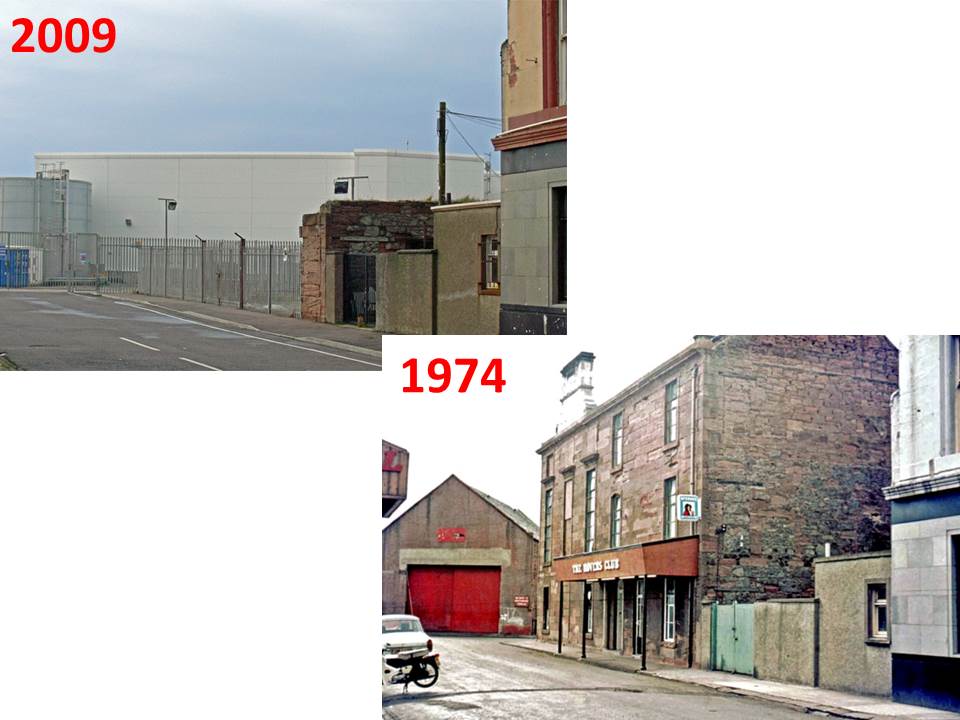
As I said earlier, some people will remember The Rovers Club. Others may recall
that in the 1950s and 1960s, the building was the Shell Club but before that,
is was the Assembly Hall.
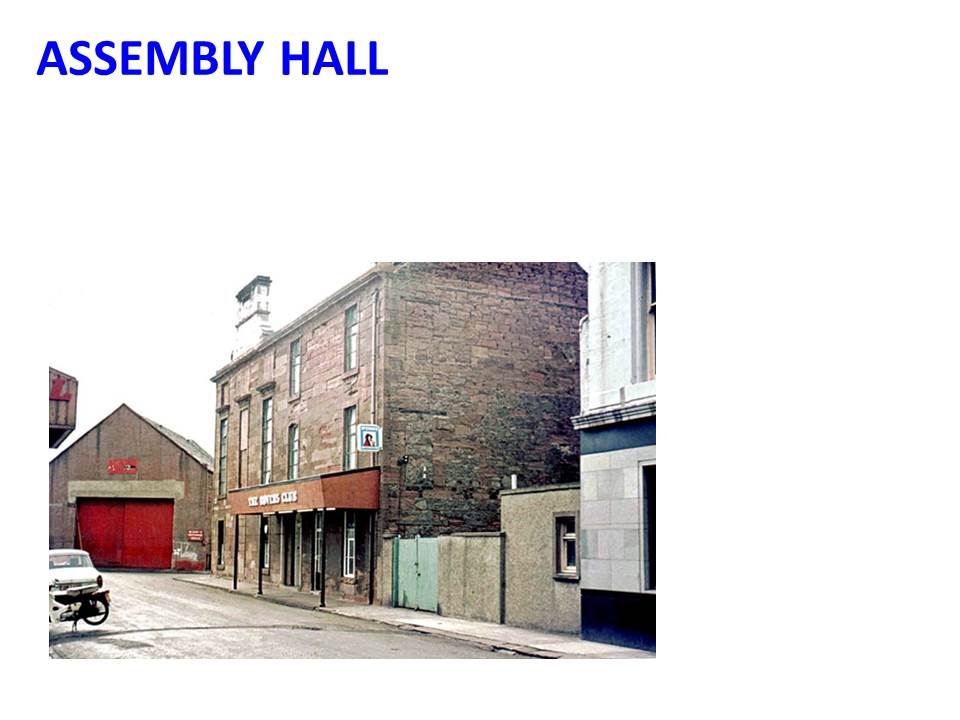
The Assembly Hall was probably built in the early 1880s and in 1926 was owned
by Harry Kemp.
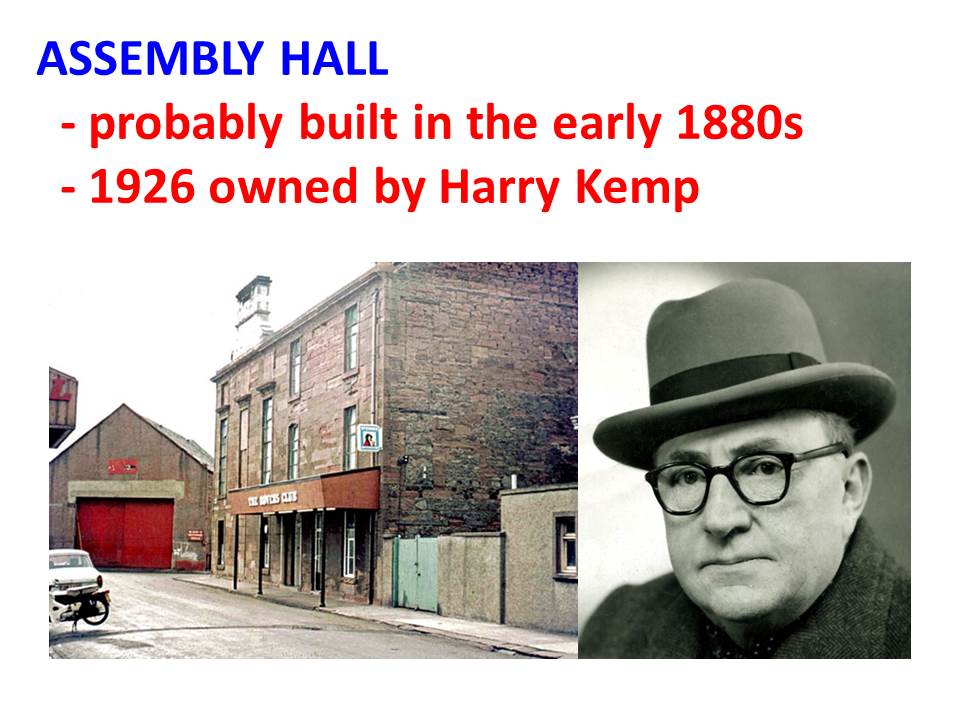
Harry
Kemp was born in Preston in 1866; took over family entertainment business in
1928; owned La Scala and Regal Cinemas in Saltcoats; allowed the Assembly Hall
to be used for Church services; donated the High Altar to Saint Peter's in 1938;
died in Ardrossan, 1972 and is buried in Ardrossan Cemetery.
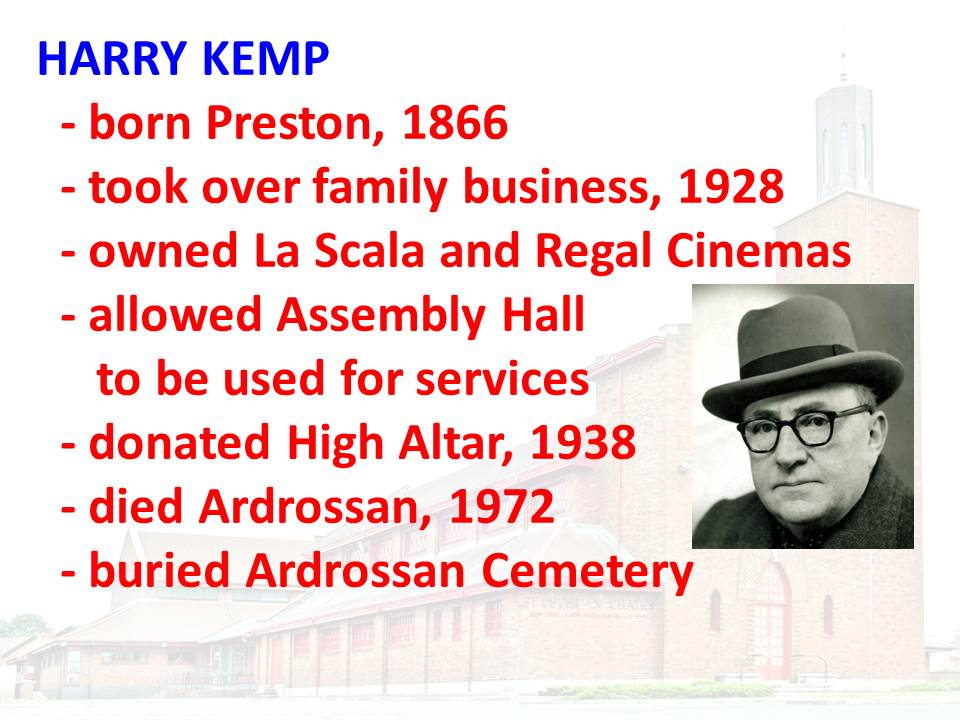
I am delighted at this point to tell you that among this evening's gathering
are two descendants of Harry Kemp - his grandson, Brian Kemp and his granddaughter,
Susan MacKay. Thanks for being here, Brian and Susan.
The first
Mass in Ardrossan since the Reformation of 1560 was celebrated in the Assembly
Hall in 1926 by Father Robert McCliment.
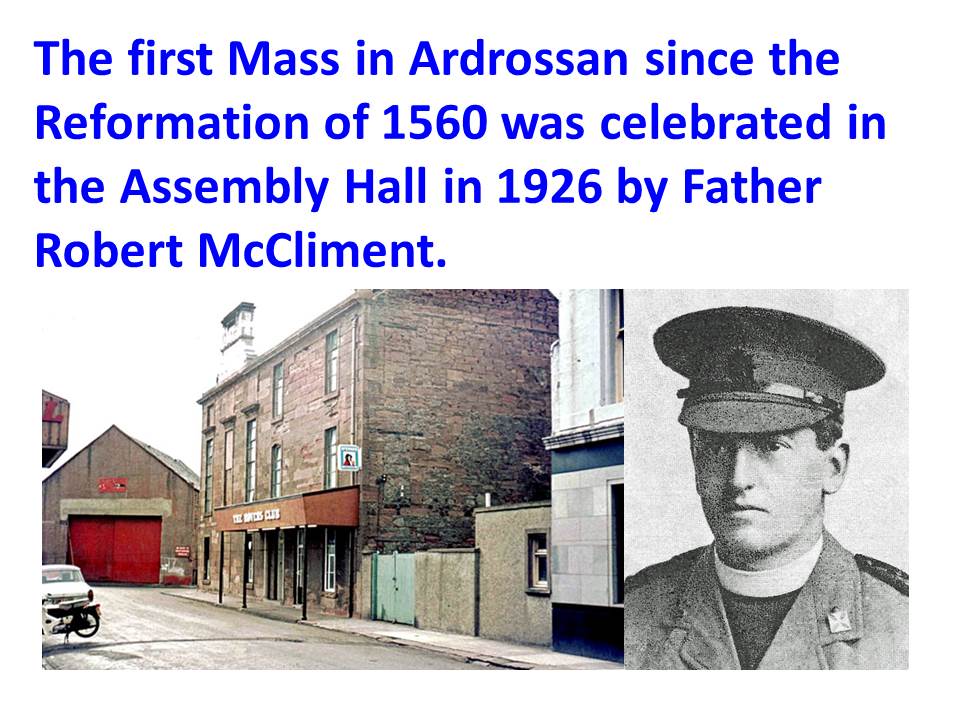
Robert
James McCliment was born in 1887. His parents were Robert James McCliment and
his wife, Maria Brodie. Maria was the sister of the grandfather of our parishioner,
Benet Brodie. Robert left Ardrossan in his early years for Folkstone, Kent where
his father was a marine engineer. He was ordained a priest in 1913. As well
as celebrating the first Mass in the Assembly Hall, Robert was an officiating
priest at the opening High Mass in Saint Peter's on 2 October 1938. He died
in London in 1967.
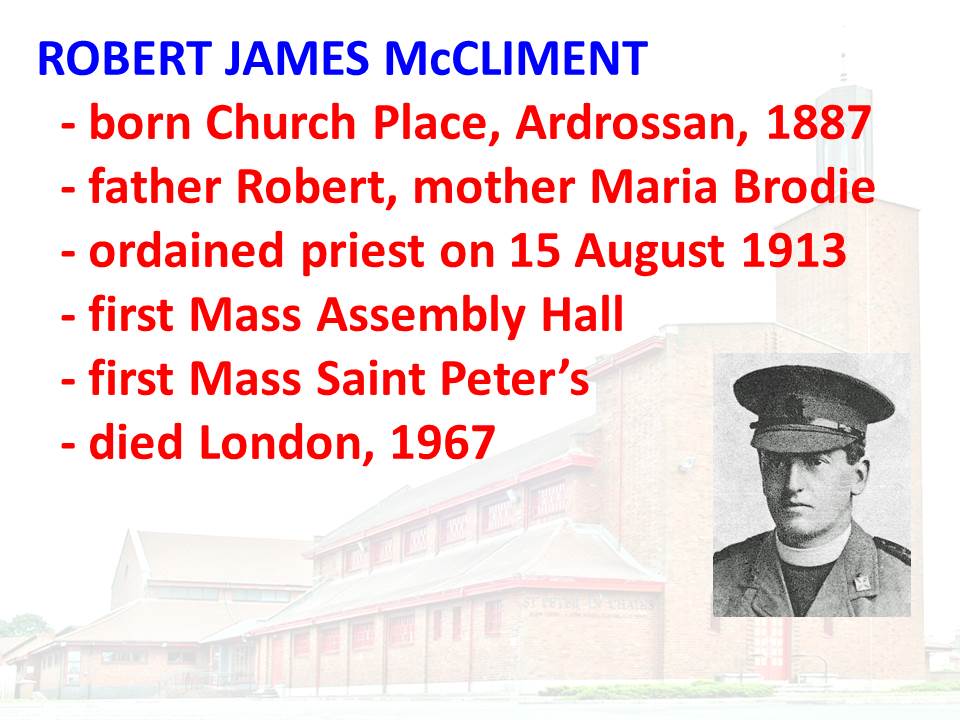
From 1926 to 1938, before Saint Peter's Church was opened, Mass and Children's
Devotions were held in the Assembly Hall on Sundays.
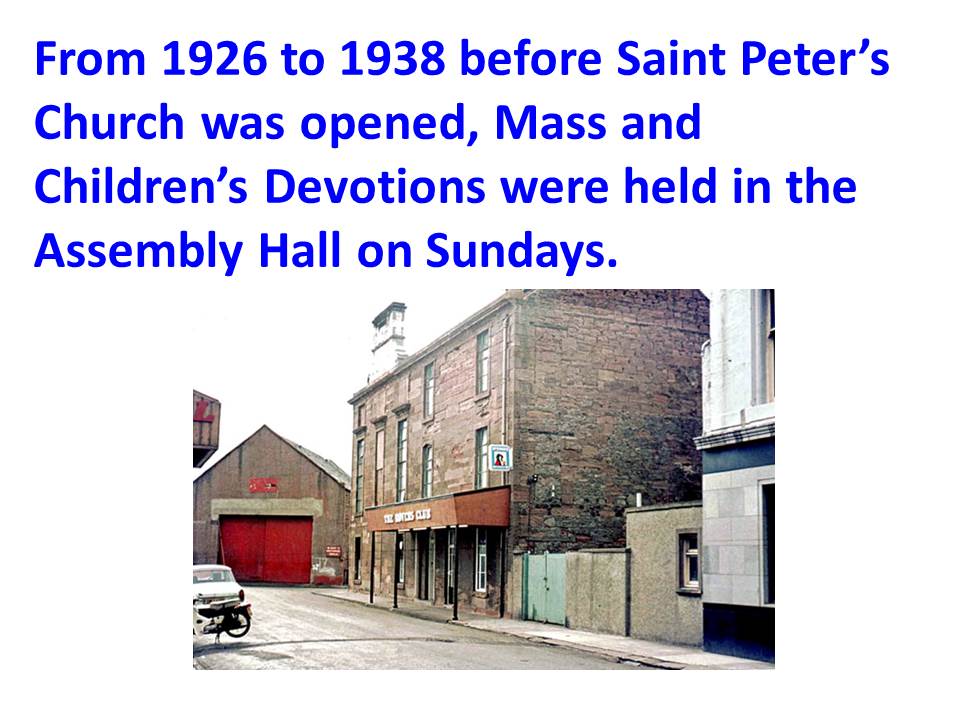
For the next part of our story, we consider the Church grounds. The house in
the photo, which was taken around 1920, played a significant part in the history
of Saint Peter's Church. The house was called The Pavilion and was the summer
residence of the Earl of Eglinton. It was build in the early 1800s. It is shown
again in the centre of the next picture. It sat at the front right corner of
the Church grounds near where the current presbytery is. A third photo gives
a view from the Cannon Hill.
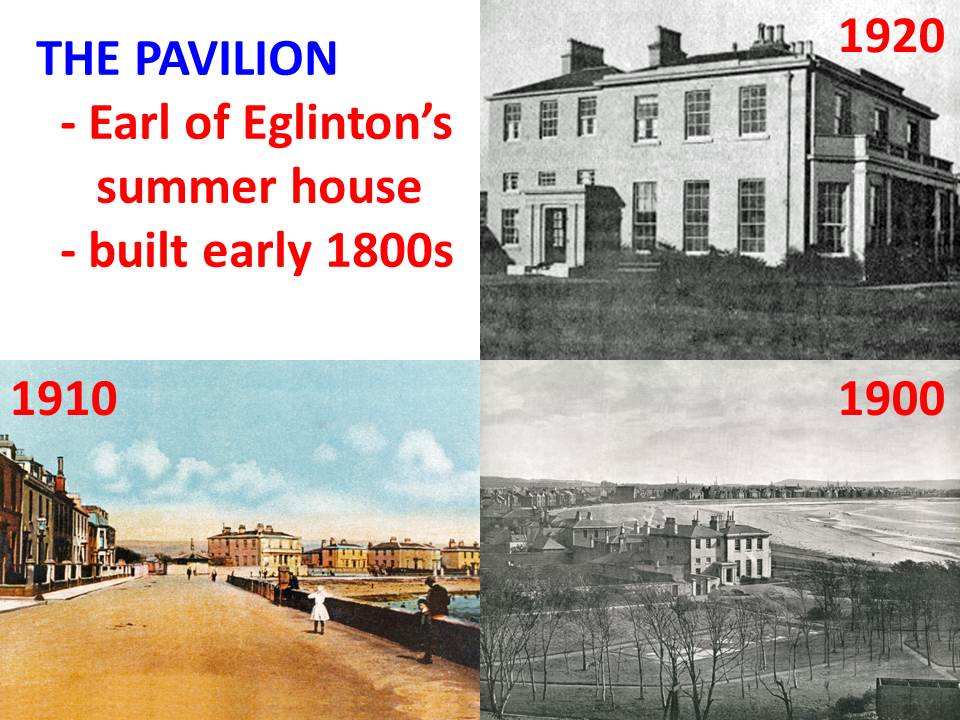
The only remaining legacy from the days of The Pavilion is the cottage in a
corner of the Church grounds. Older parishioners will recognise this photo as
the kitchen of the Church Hall which existed from 1963 to 1997.
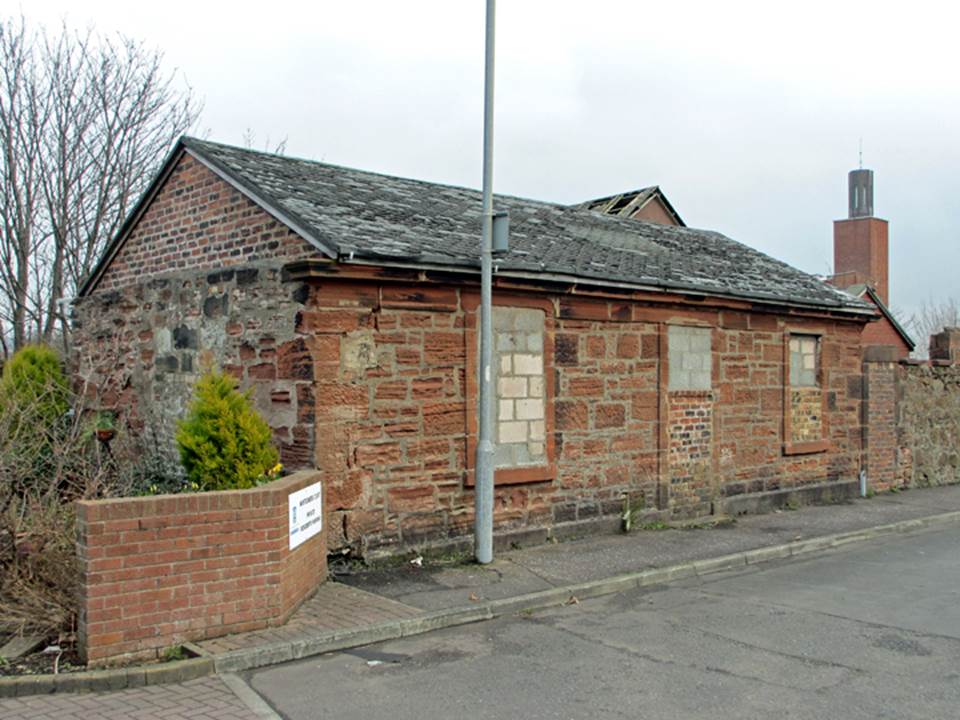
Prior to being the Church Hall, it was the Church caretaker's cottage. Long
before that, the cottage was used by the caretaker of the Pavilion. In the 1920s,
that post was held by a man called Henry Jacobs.
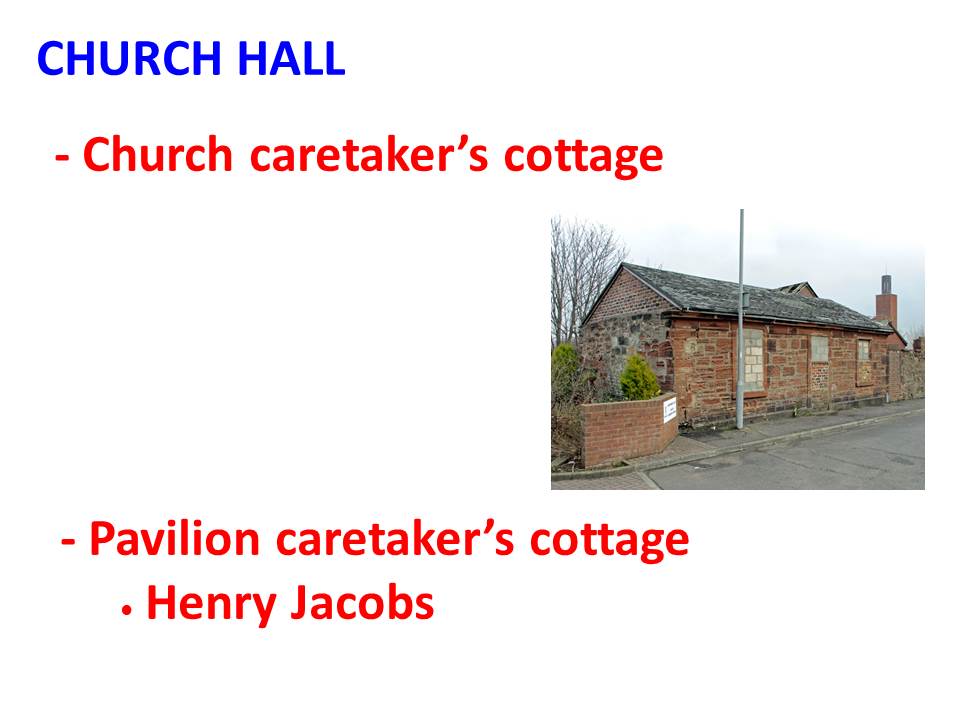
Most people here will recognise this as Manse Street in Saltcoats.
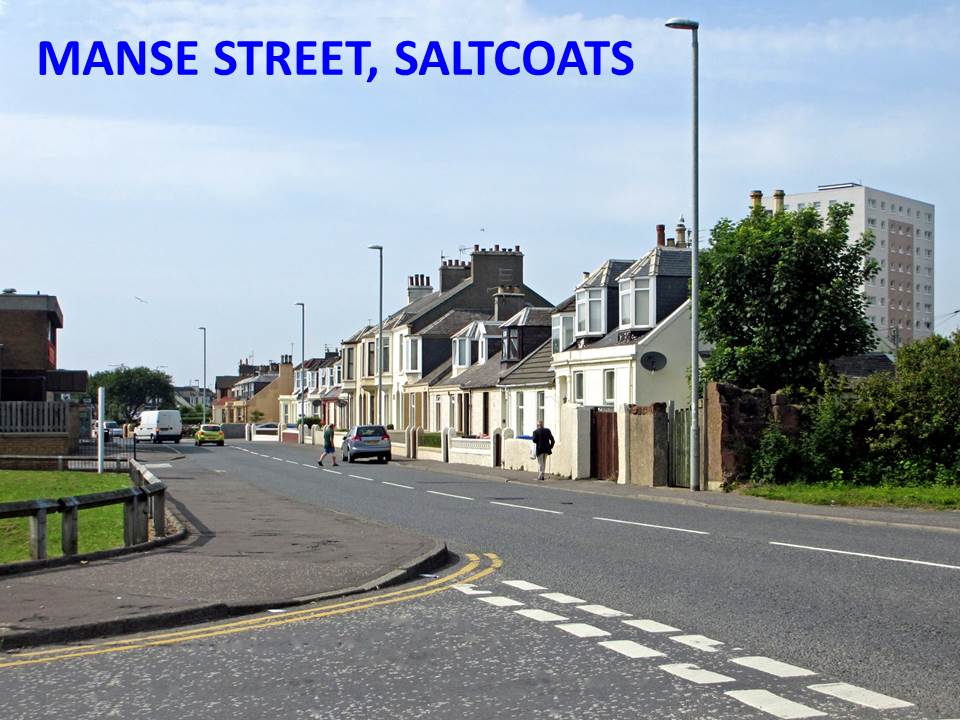
One day in the early 1920s, Henry Jacobs was walking in Manse Street. As he
came near the house called Drumilly, he saw the owner Michael Reilly working
in his garden. Henry Jacobs told Michael Reilly that the Pavilion and its grounds
would soon be available for sale. Michael Reilly immediately telephoned Father
Patrick Ryan former Parish Priest of Saint Mary's, Saltcoats, then serving in
Glasgow. He in turn told Archbishop Donald Mackintosh of Glasgow of which Ardrossan
was then part.
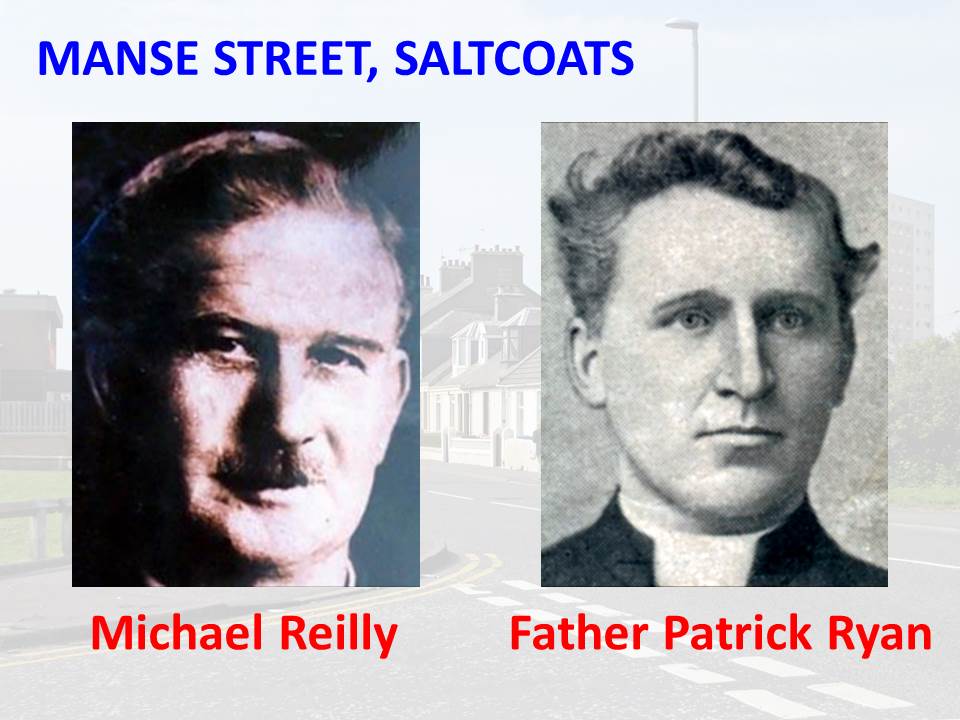
As a direct result, the Pavilion and its grounds were sold to the Archdiocese
of Glasgow in 1924 for £4500.
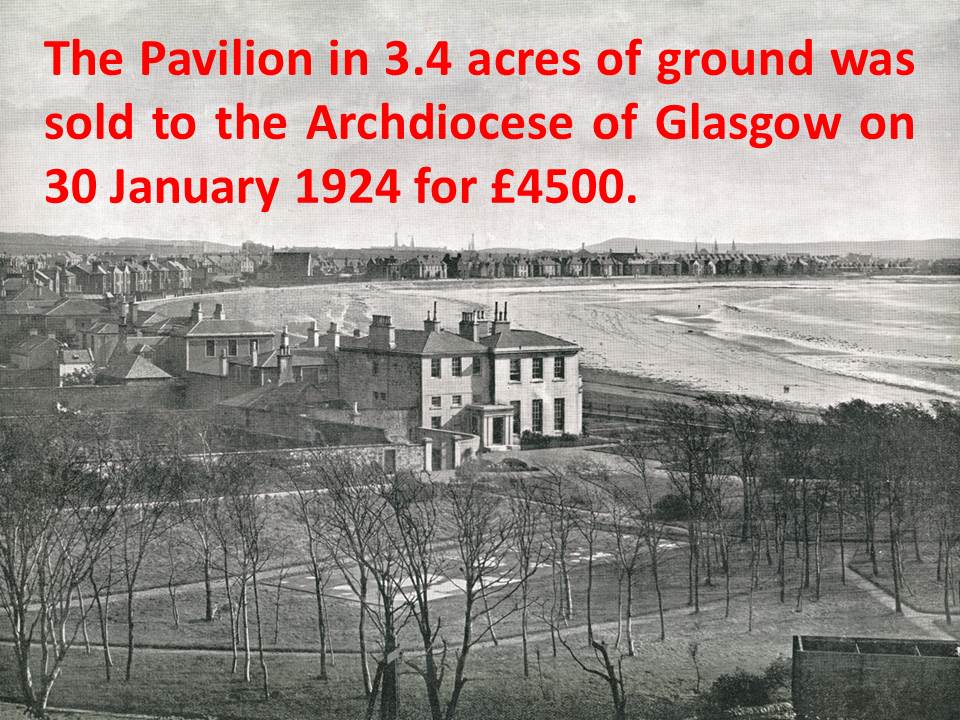
The land in the foreground of this picture was destined to become the site of
the Church of Saint Peter in Chains.
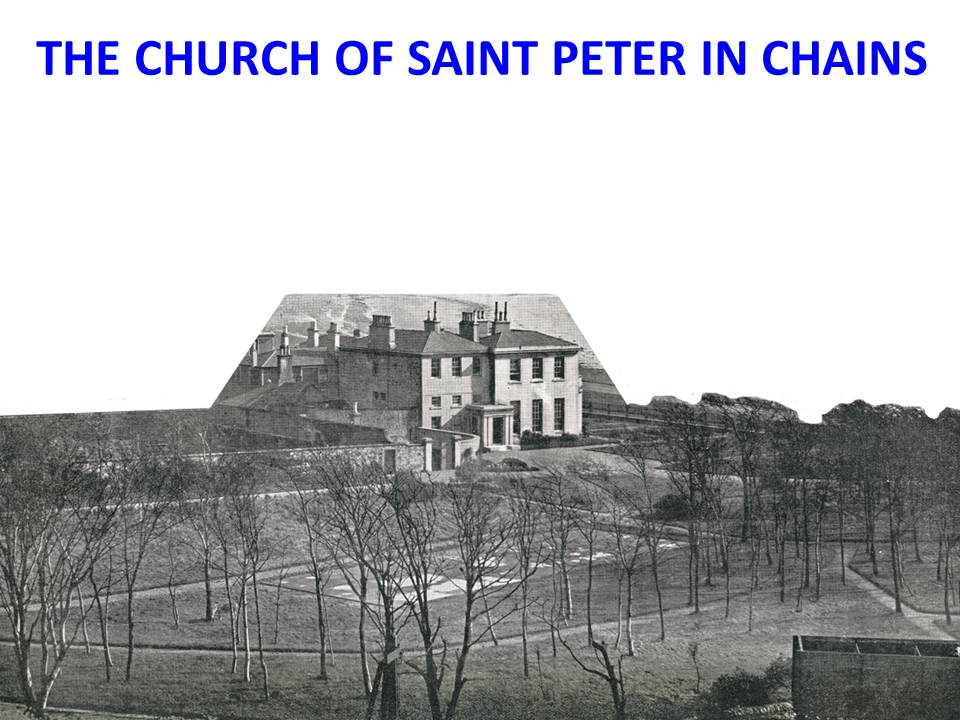
Backtracking, Michael Reilly was the grandfather of the Reilly and Timmons families
and the father of Peter Reilly who - I am honoured to say - is with us here
this evening.
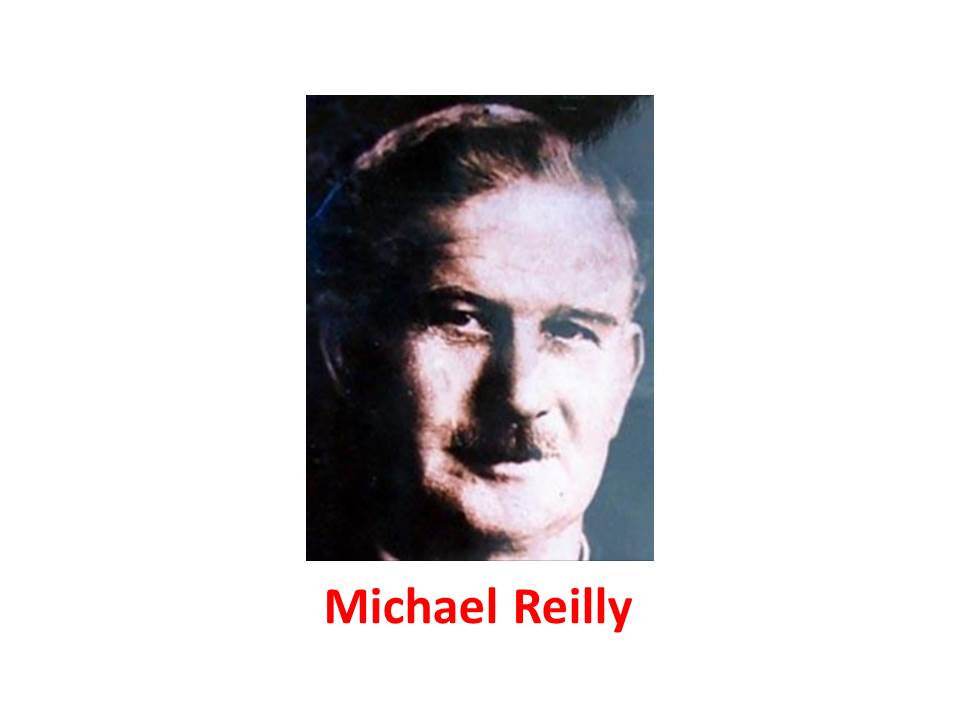
The Archdiocese
now had land for a Church but although it was bought in 1924, it lay neglected
for years. The Pavilion fell into disrepair and its gardens became overgrown.
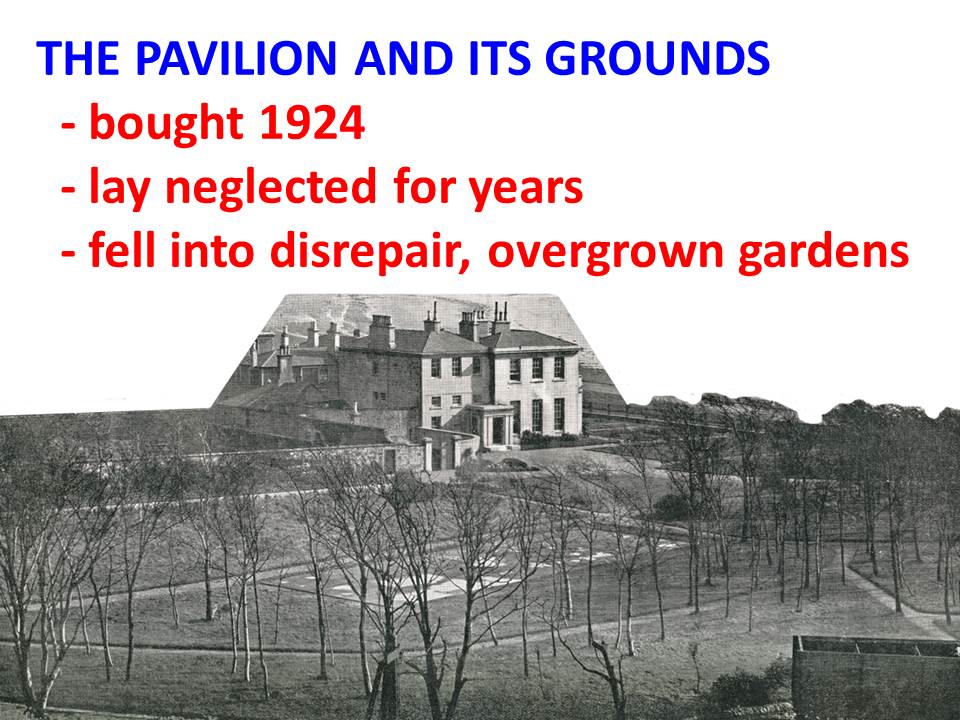
The Catholics of Ardrossan were frustrated at not having a Church on land bought
for that purpose. There was objection by some local people to the building of
a Church. The clergy in Saint Mary's were not fully in favour of Ardrossan having
its own Church. As a result, little progress was made. It was then decided that
a delegation from Ardrossan and Saltcoats would go to Glasgow to speak to Archbishop
Mackintosh around 1931.
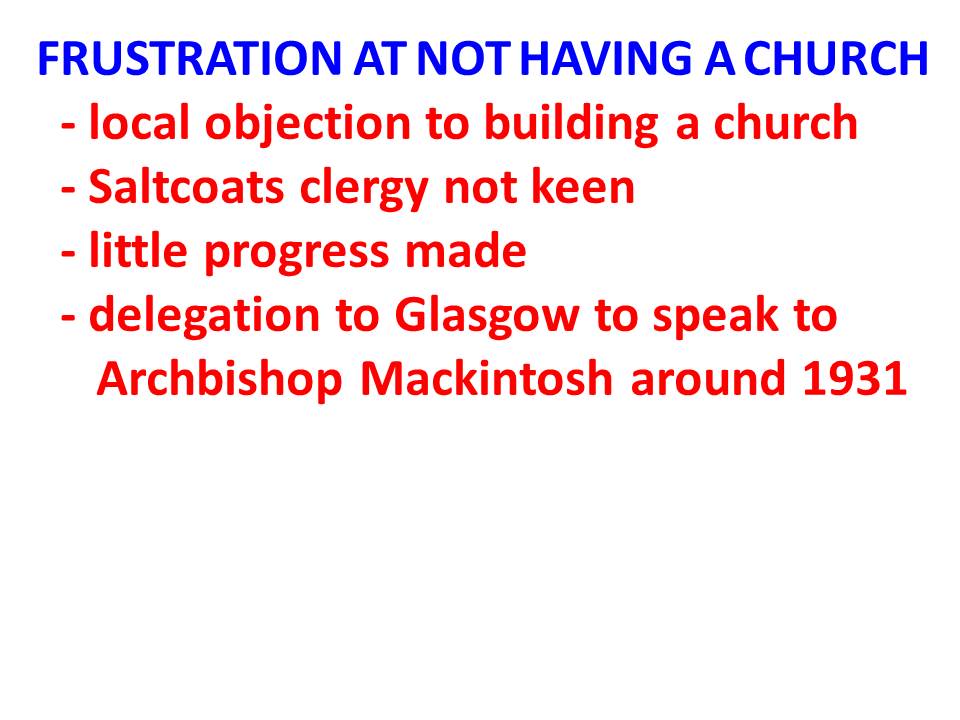
The group was led by Michael Reilly.
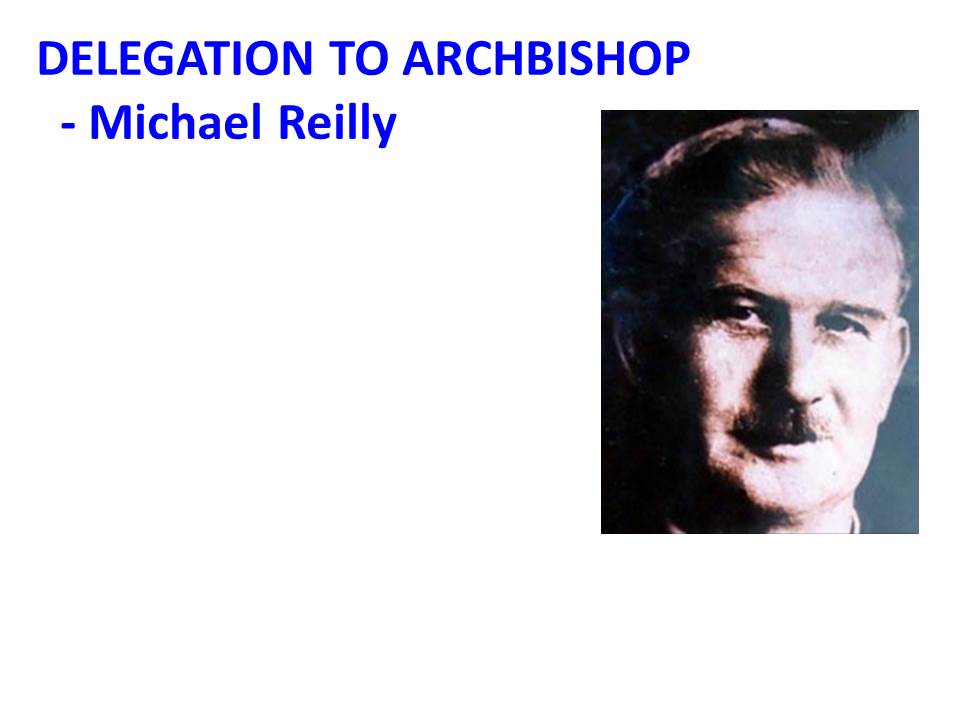
Other members included Bessie Brown - my grandfather's sister,
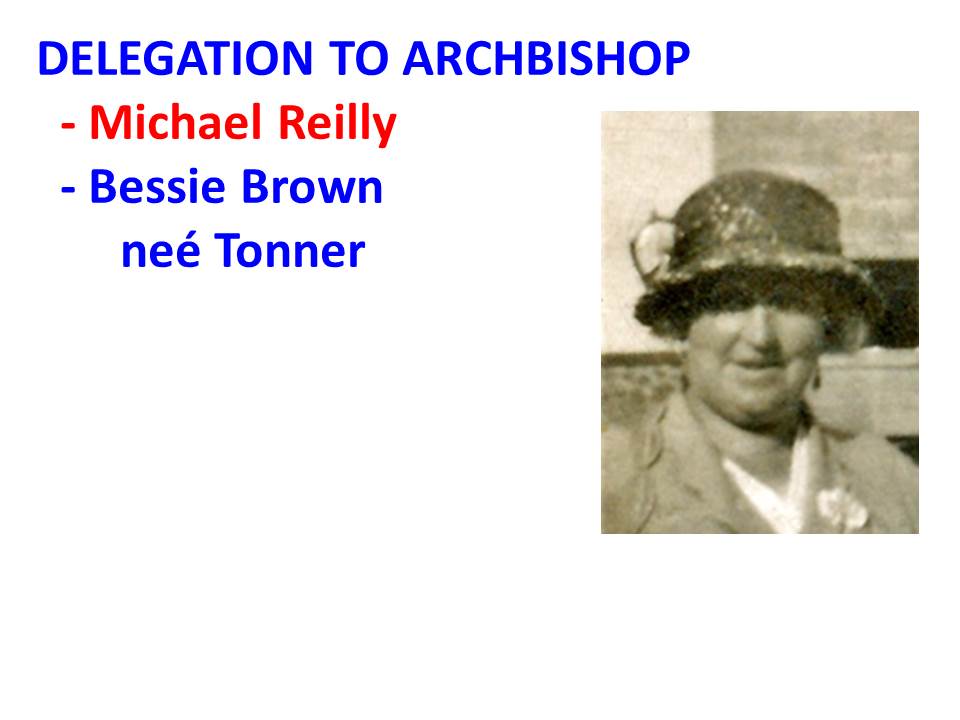
Andrew McCarroll whose brother James was also a celebrant of the first Mass,
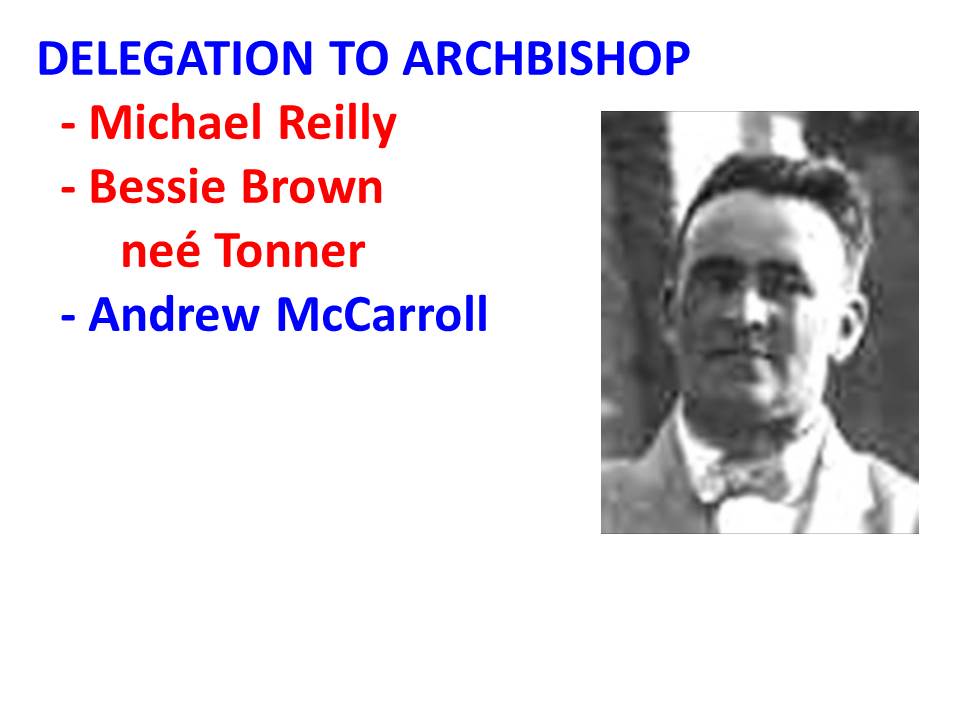
Catherine McGrattan - my granny,
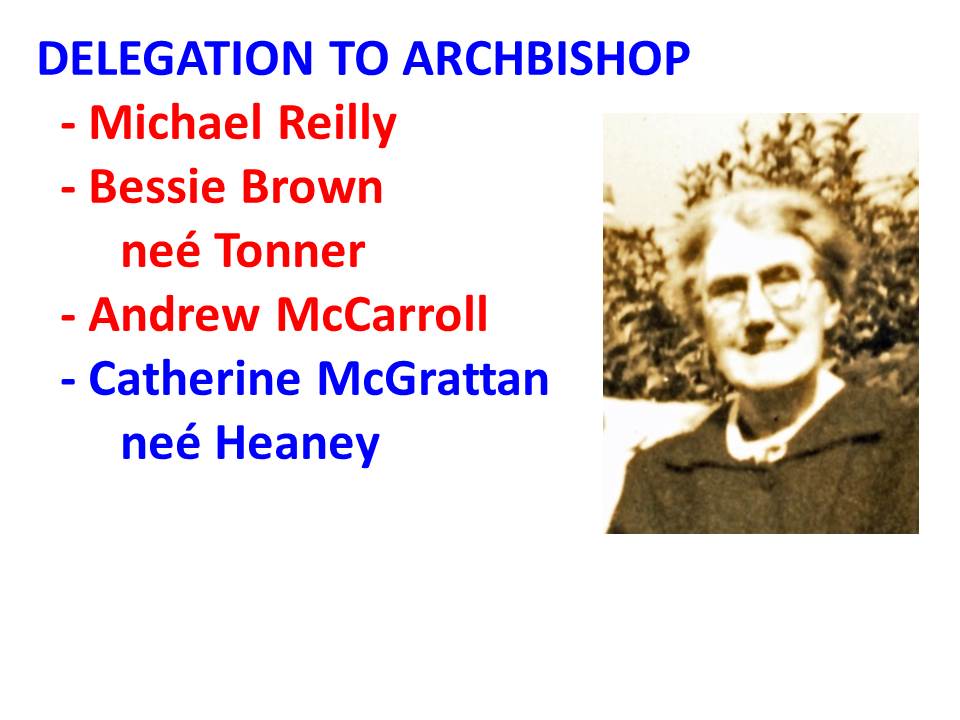
Margaret Anne Shanks
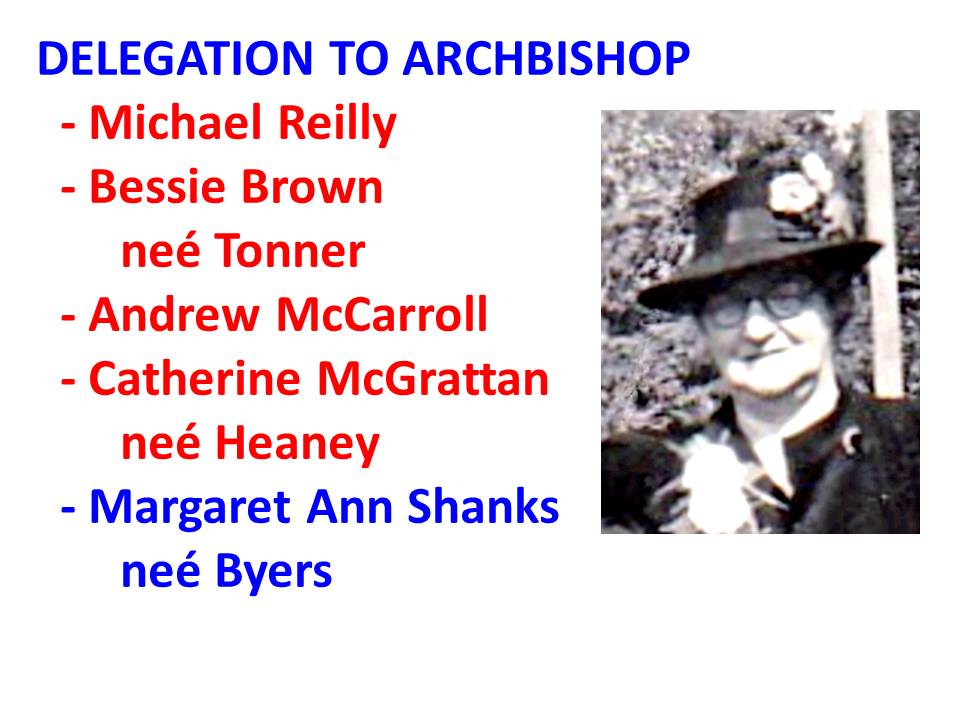
and Katherine Shearer.
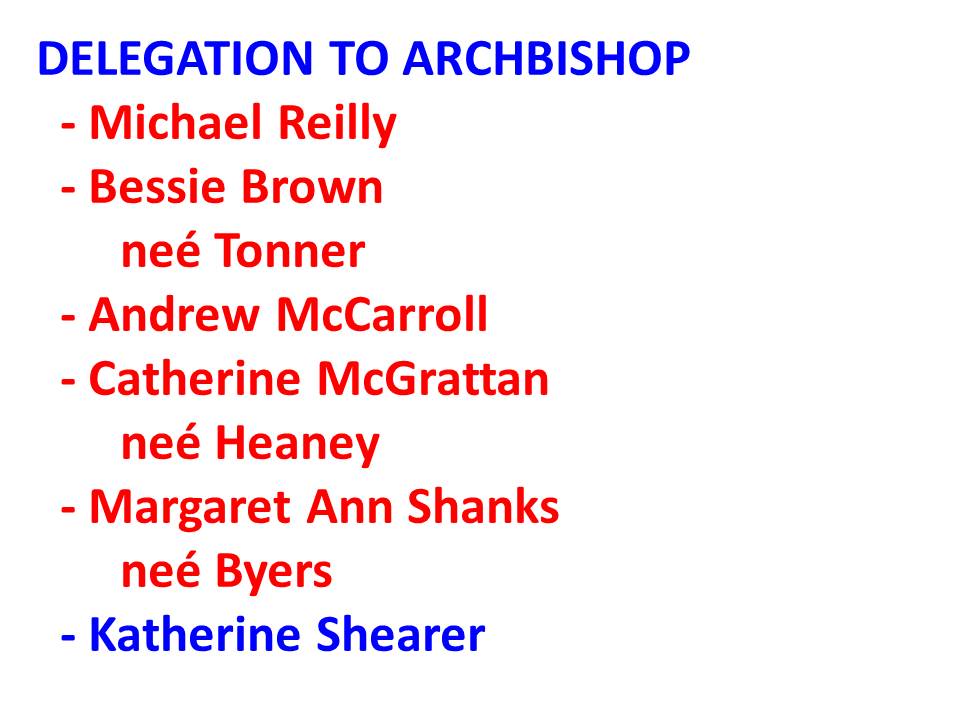
The delegation stated their case and the Archbishop listened attentively. It
is to Michael Reilly's credit that he paid the train fares and treated the group
to a meal in Glasgow after the meeting. On their return, they reported to Father
Francis Stephen, Parish Priest of Saint Mary's in Saltcoats. Father Stephen
was displeased that they had spoken to the Archbishop without his prior knowledge.
Father Stephen died in December 1932 and was succeeded in 1933 by Father Joseph
Doherty. The delegation to Glasgow was not in vain because shortly after his
appointment, Father Doherty was instructed by the Archbishop to arrange the
building of a Church in Ardrossan.
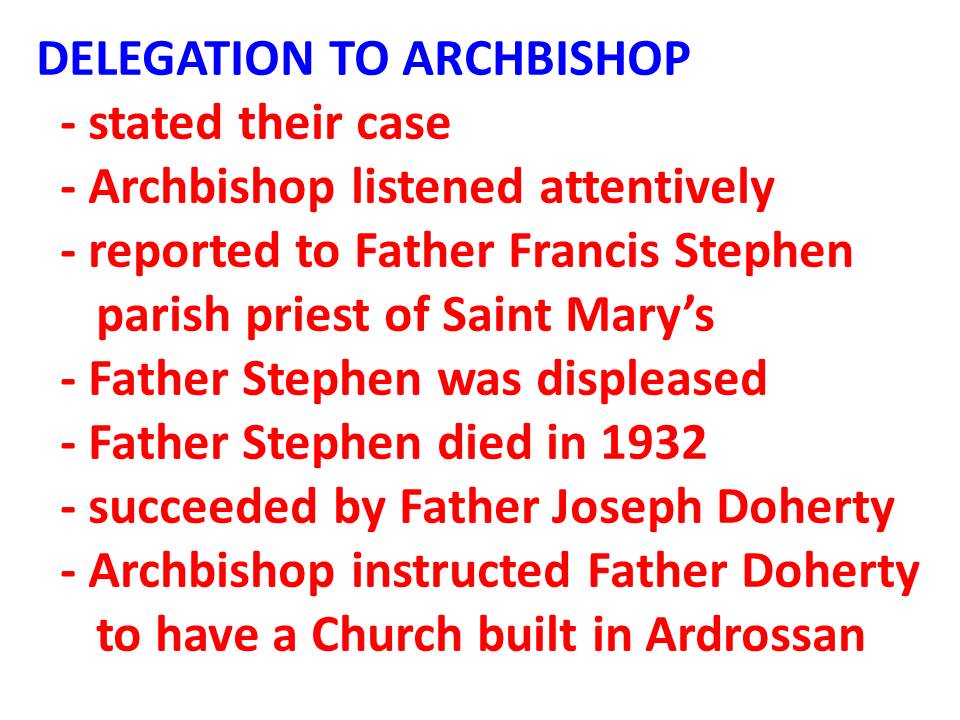
Matters were improving. There was land to build a Church and approval to build
had been given. What was needed next was money so a fundraising campaign was
started. A building fund committee was established. This photo, taken in 1933,
shows some committee members in front of the derelict Pavilion.
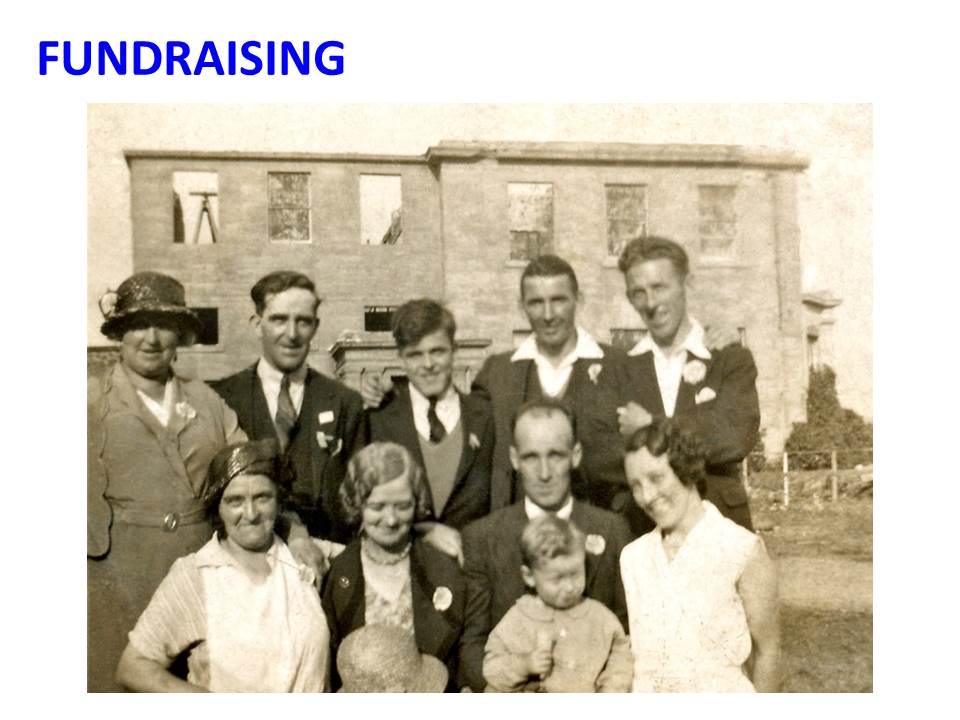
The people are Bessie Brown - mentioned earlier,
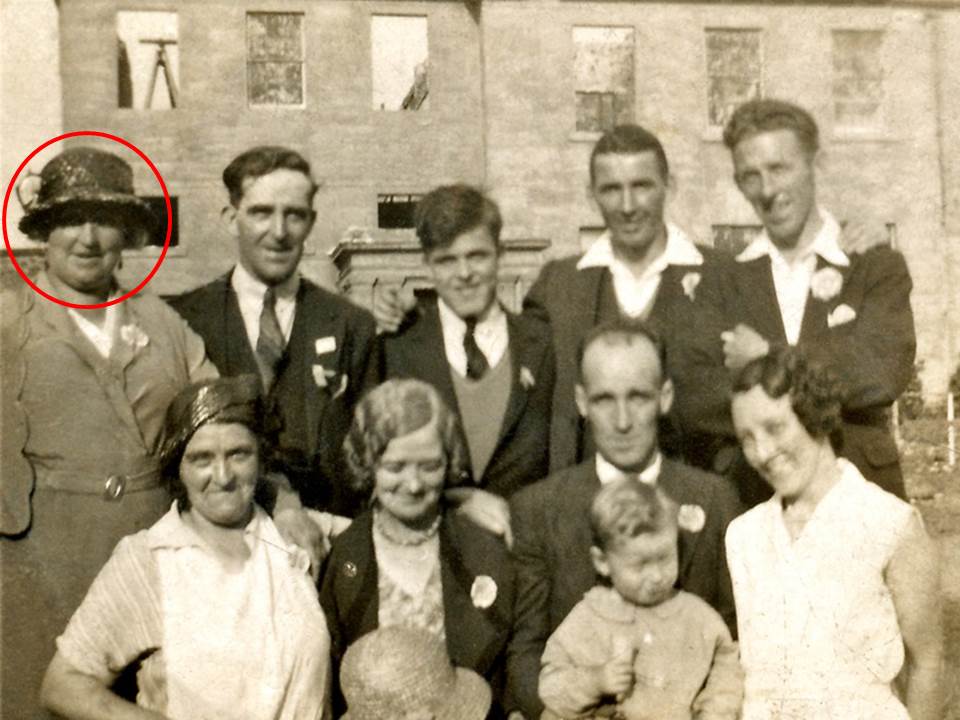
Willie Tumilty - father of our parishioner Margaret Gribben who gave me the
photo and who is with us tonight,
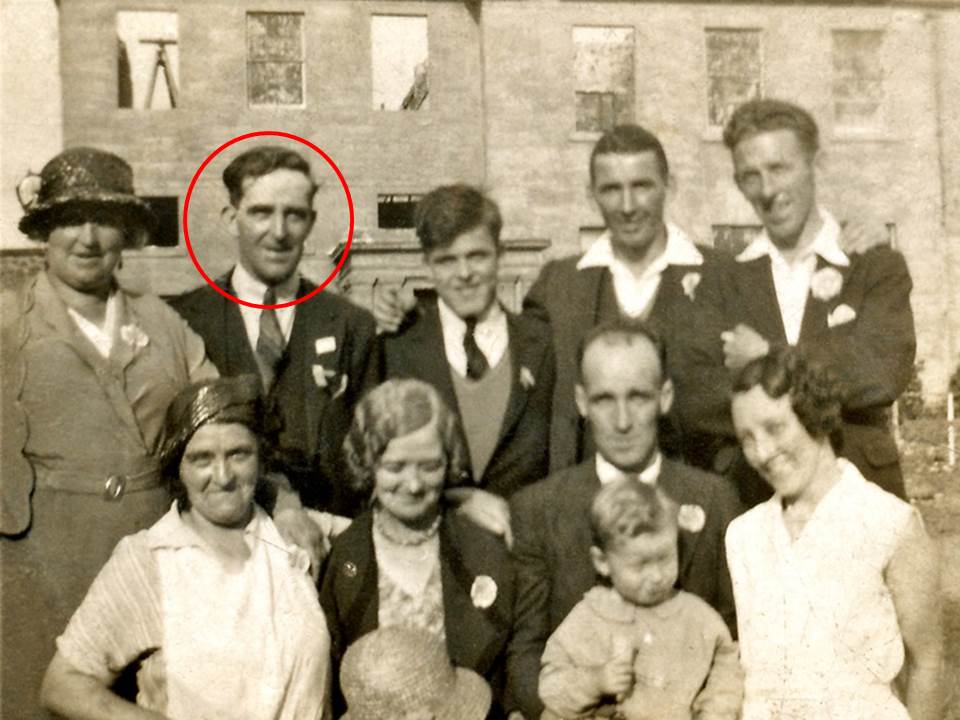
Terry Murphy,
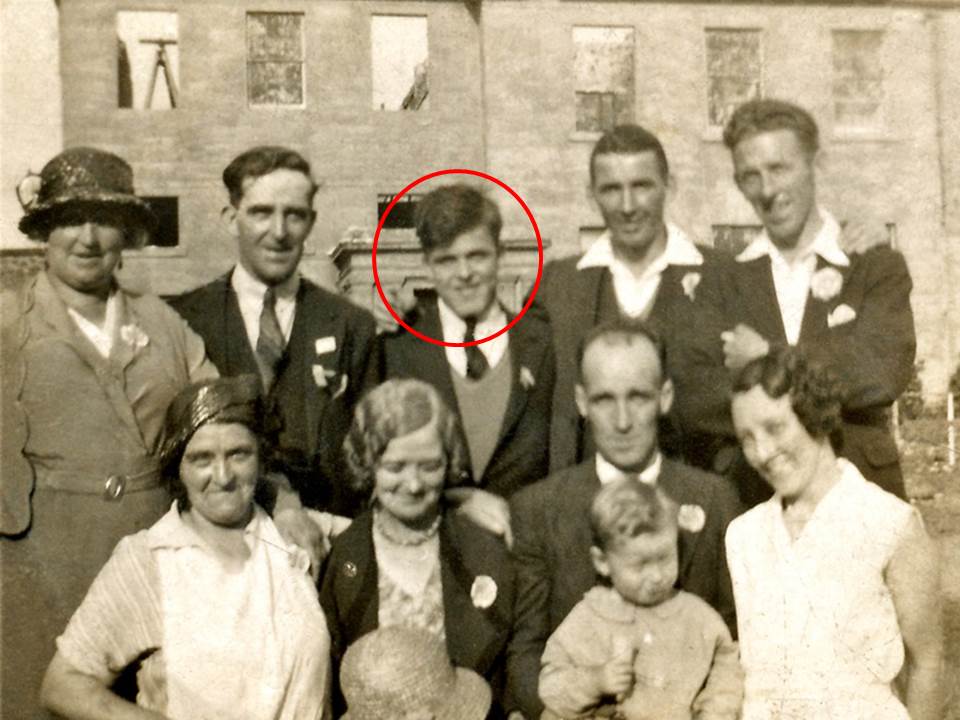
Jimmy Monan,
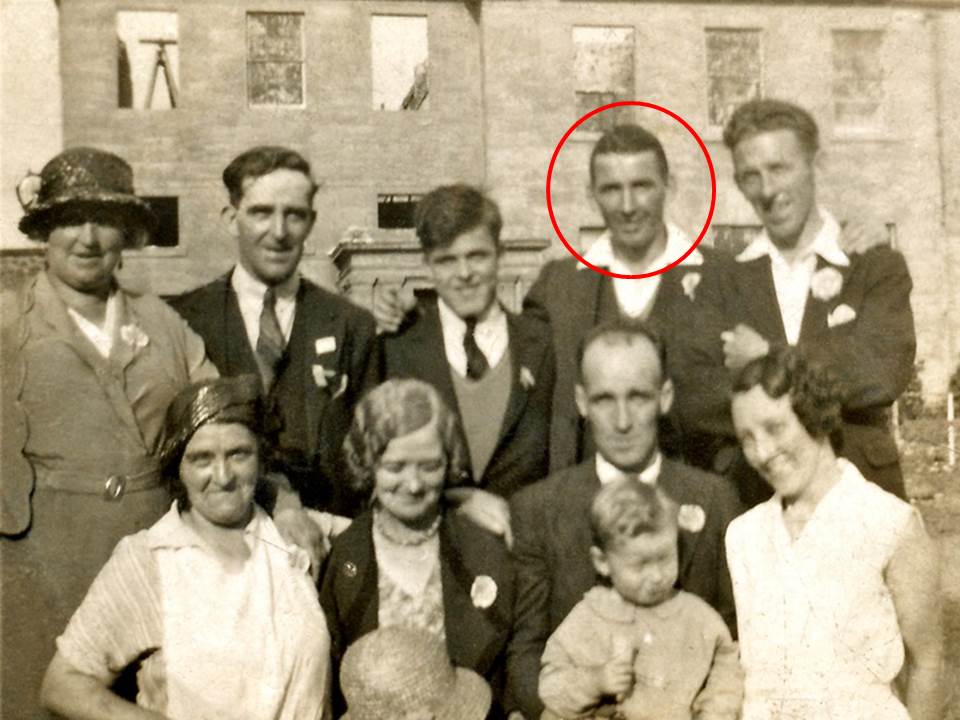
Peter McEvoy, father of our parishioner, Kathleen McEvoy,
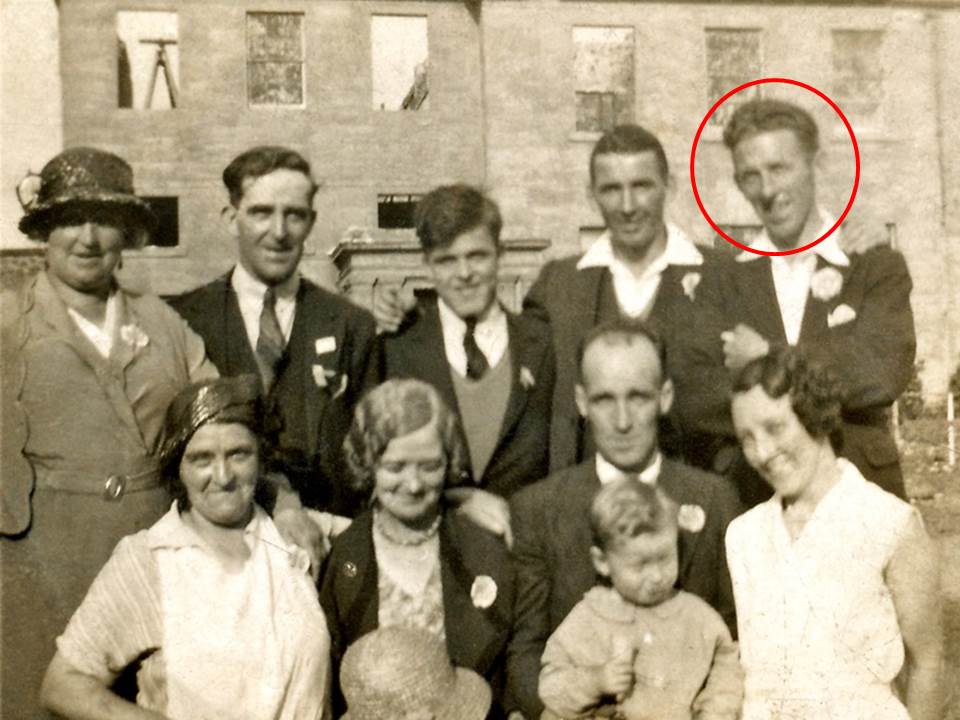
Jane Tumilty - Margaret Gribben's mother,
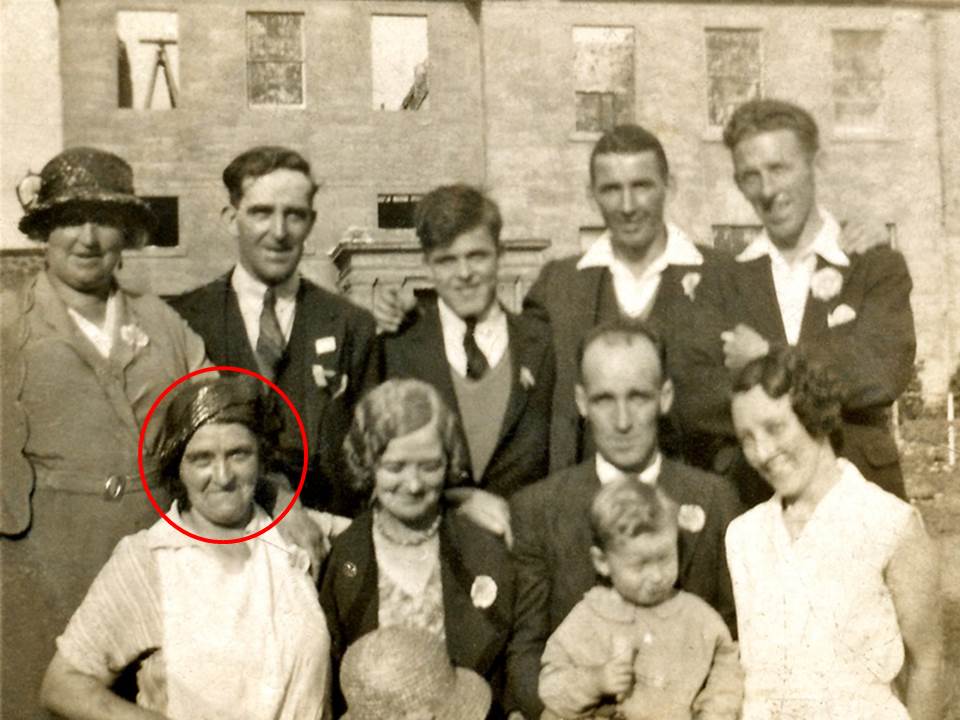
Helen Neilson
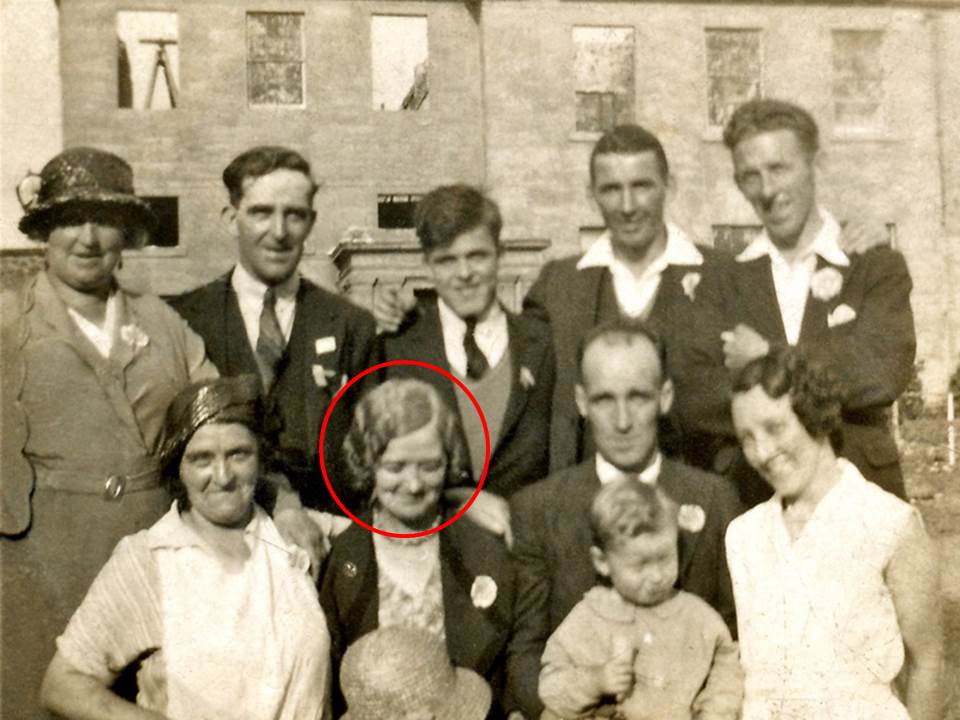
and Tommy McCann, father of our parishioners Rose McCann and Kathleen Tracey
who are here this evening and Tommy McCann.
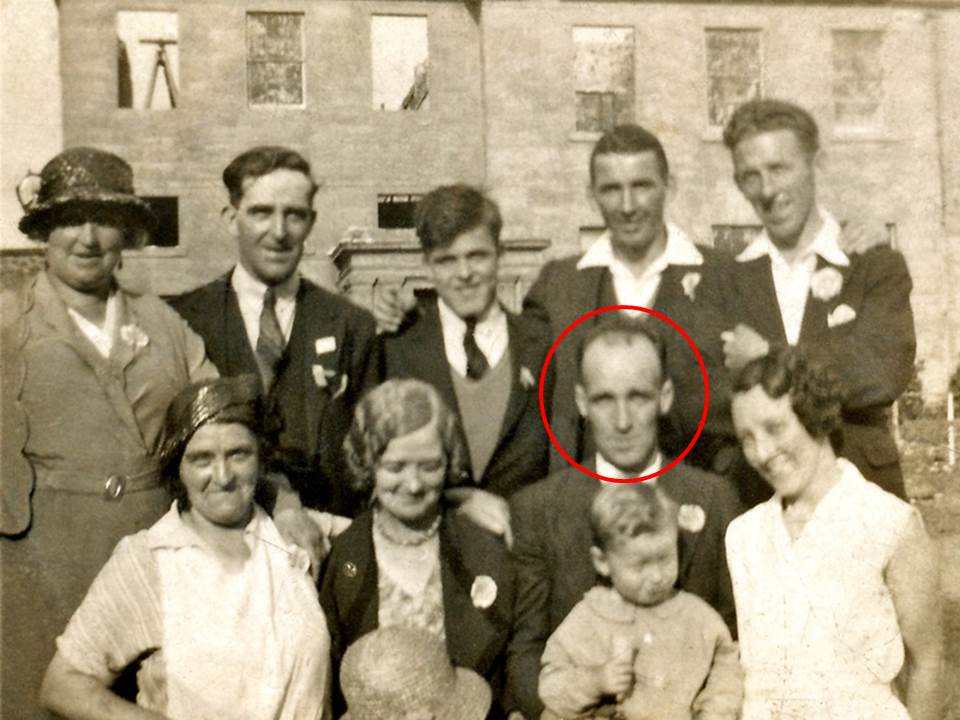
The child is Eddie McCann who was an altar server at the first Mass
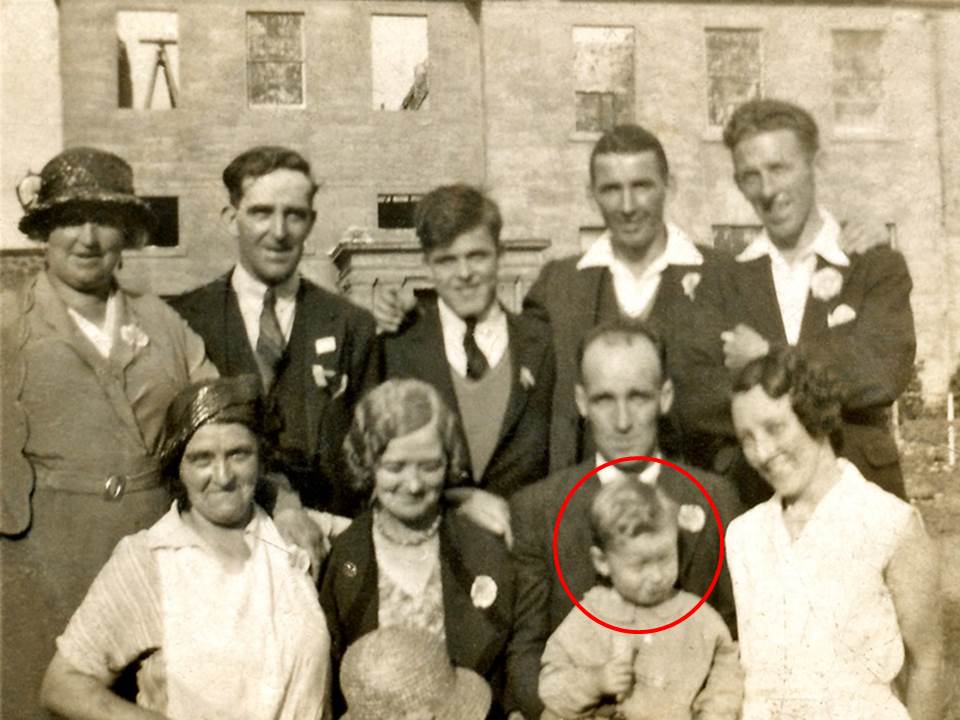
and the lady at the bottom right is Bella McIntyre - Jane Tumilty's sister.
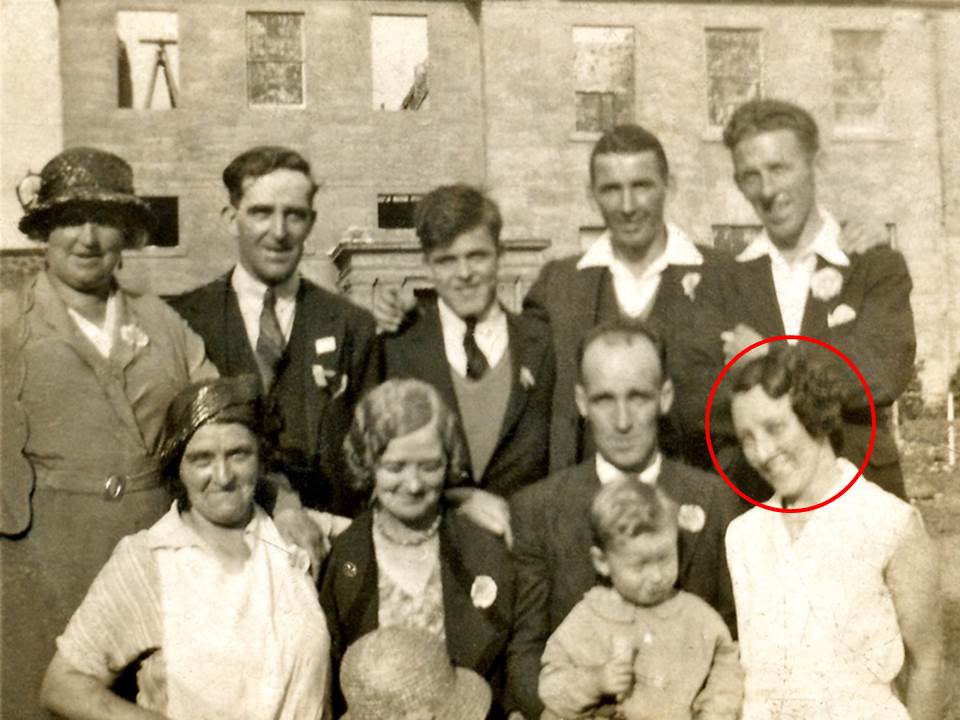
The fundraising events included Go As You Please Concerts in the Assembly Hall;
Half Crown Cruises to Rothesay; Buy A Brick; Whist Drives and a concert in the
Beach Pavilion, Saltcoats on 28 October 1933 on which a report was printed in
the Ardrossan and Saltcoats Herald.
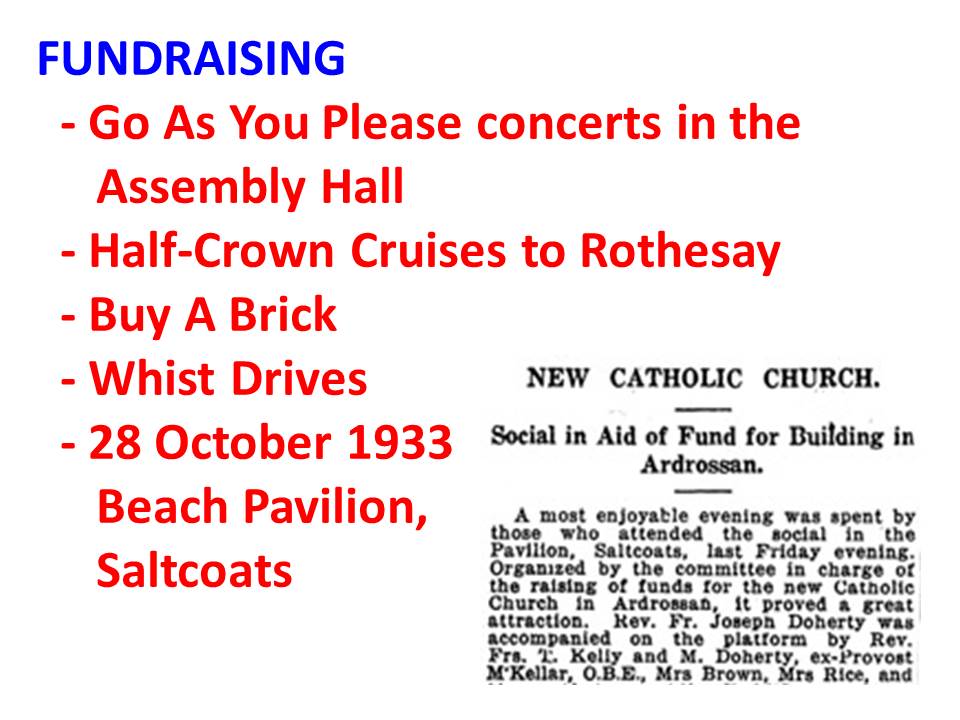
The Building Fund Committee got a mention in the opening paragraph.
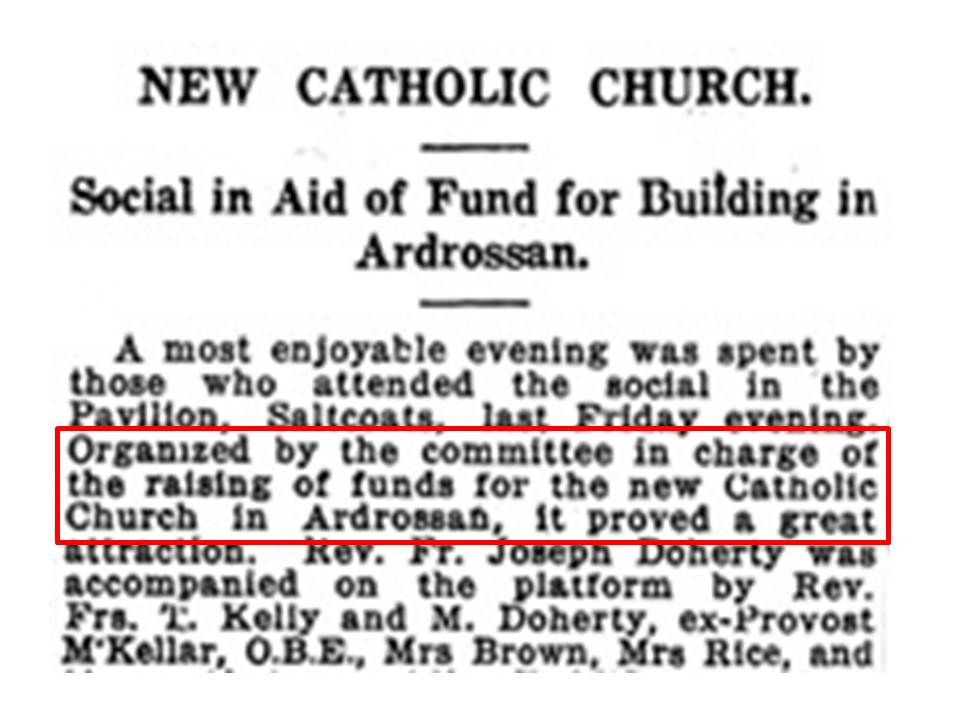
In the second paragraph,
it was stated that 'After a splendid tea, the audience was entertained to a very
enjoyable programme of songs, dances and farcical interludes by the Variety Sparks
from Glasgow under the leadership of Mr Gerard McCulloch'. Our older parishioners
will remember that Gerry McCulloch was the organist in Saint Peter's from the
early 1950s to the late 1960s. Gerry is the father of our parishioner Michael
McCulloch and it was very appropriate that Michael led the singing of Faith Of
Our Fathers from the choir loft at our anniversary Mass on Wednesday and was a
choir member again this evening.
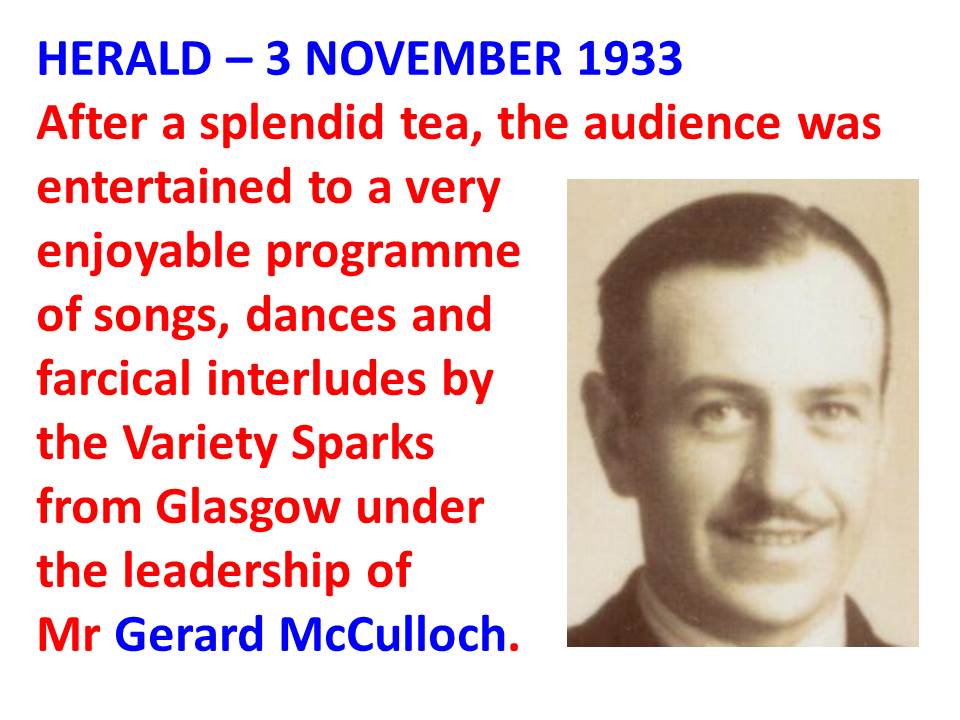
Gerry
was mentioned again towards the end of the report when it was written that 'A
very successful dance followed the social function when the music was provided
gratuitously by Gerard McCulloch and his Syncopaters from Glasgow and William
Shanks and his band from Ardrossan. Willie Shanks is the father of our parishioner
Joan Usher.
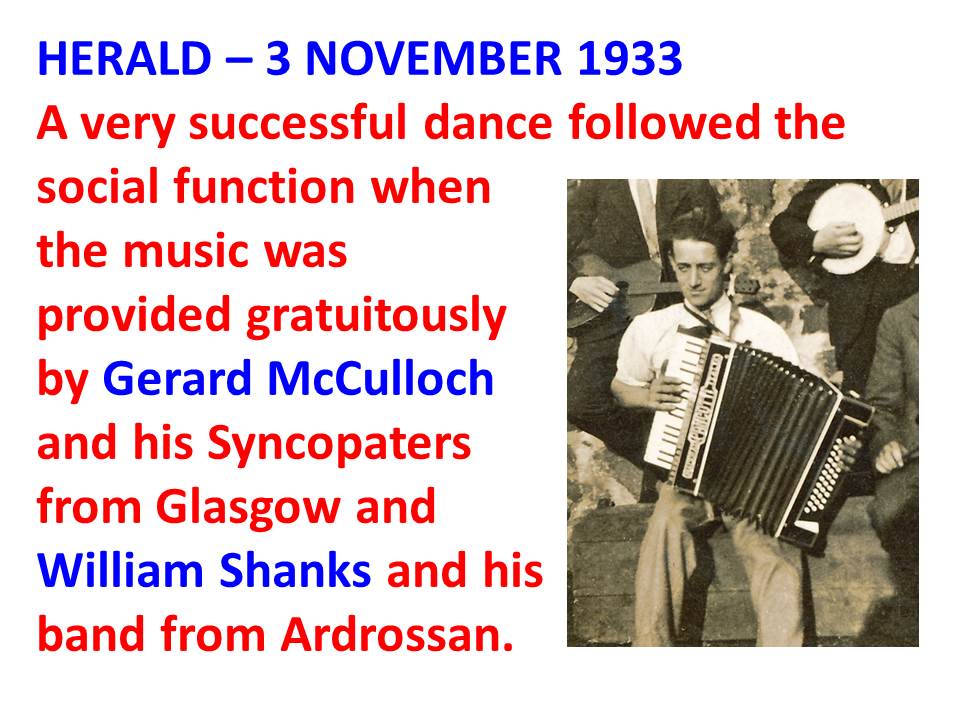
Willie's band was known as the Moonlight Serenaders and here is a photo of them.
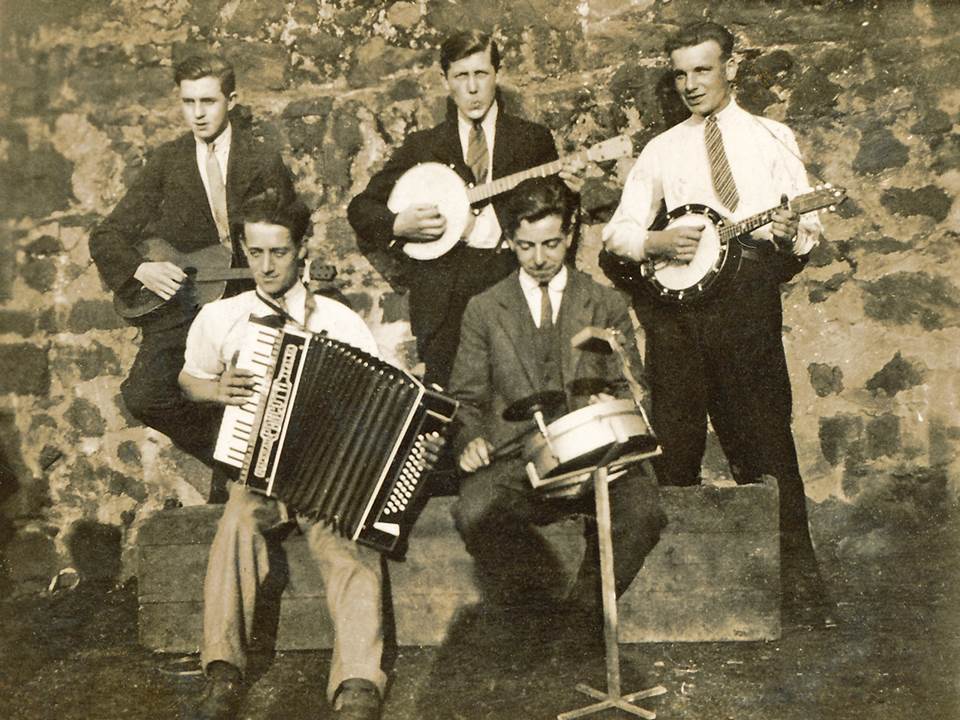
The drummer was Robert Byers. Robert was the brother of our parishioner Josephine
Atkins who is with us this evening.
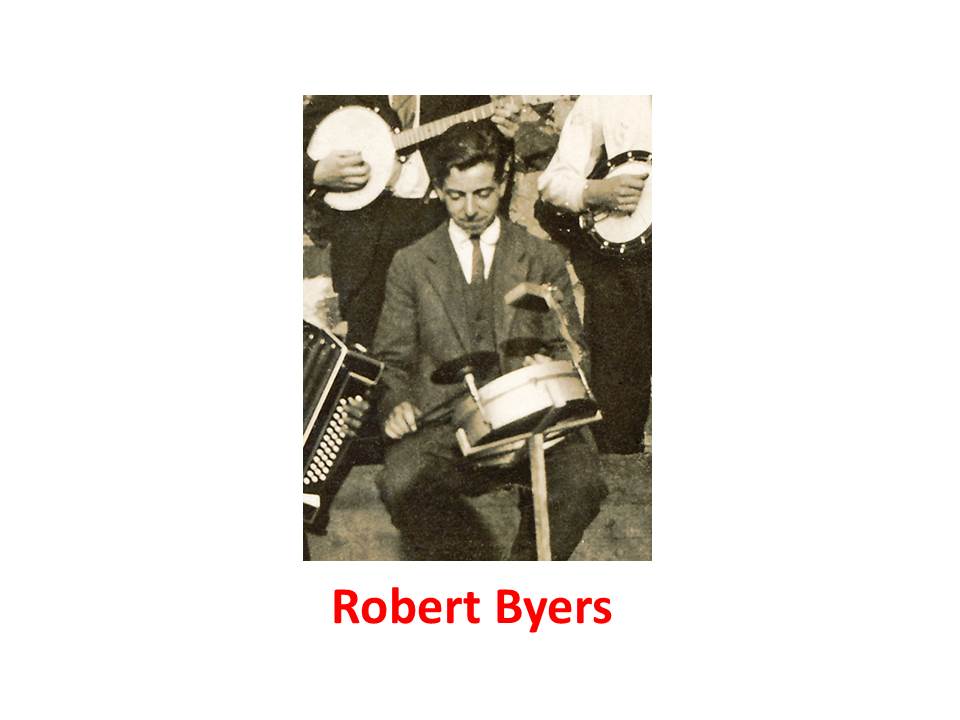
Fundraising proved to be beneficial because in 1935, the Pavilion was demolished
to allow construction of the Church.
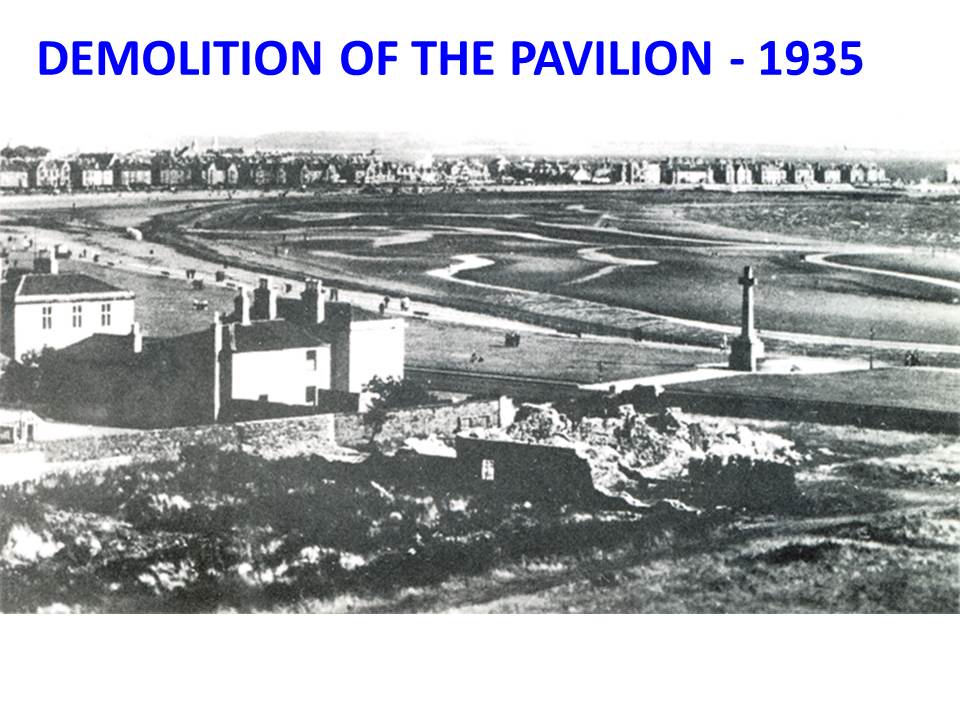
Building of the Church started and was completed in 1937 after which focus shifted
to the interior.
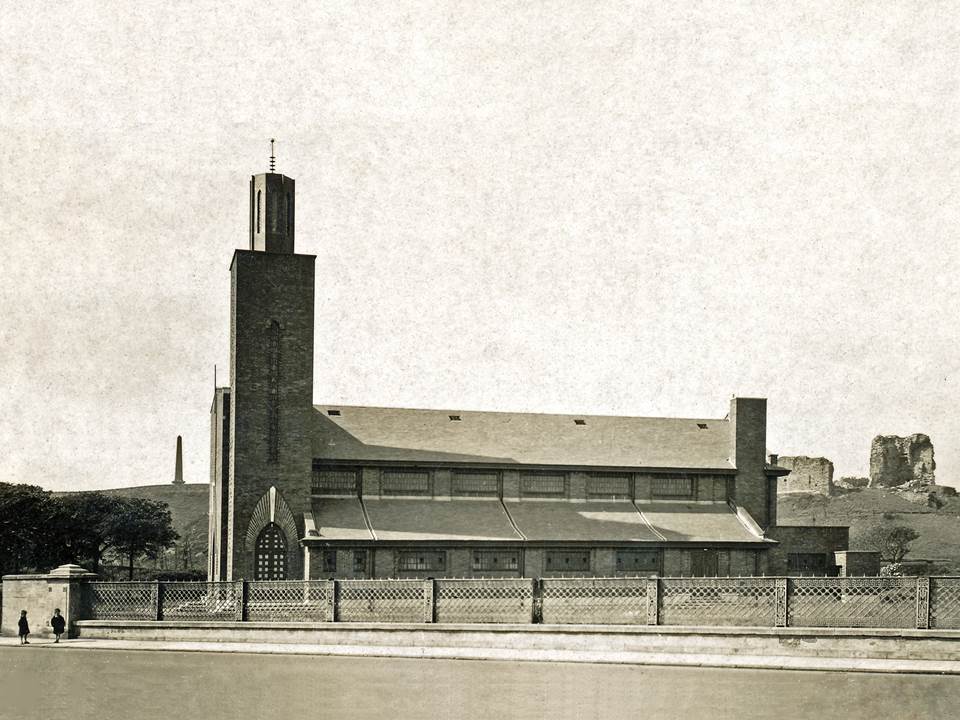
As the
interior reached completion, invitations for the opening Mass were sent. This
one was for James Langan and family. James's daughter, Cathy, played the organ
at the first Mass.
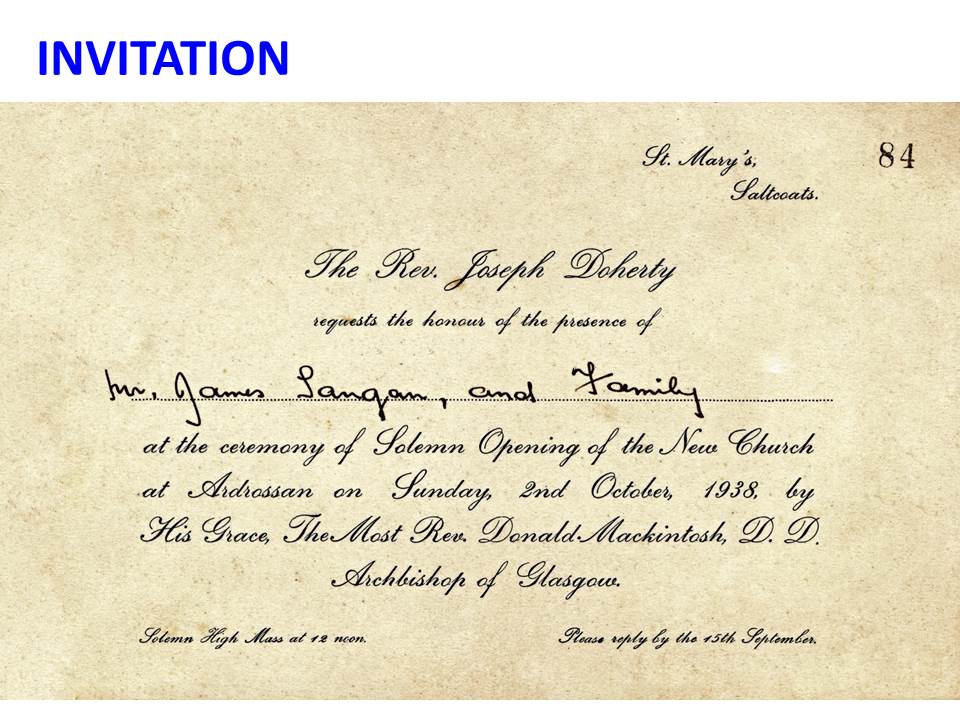
Eventually, the opening day dawned - seventy-five years ago on 2 October 1938.
As the congregation entered the Church, they saw, for the first time, the Sanctuary,
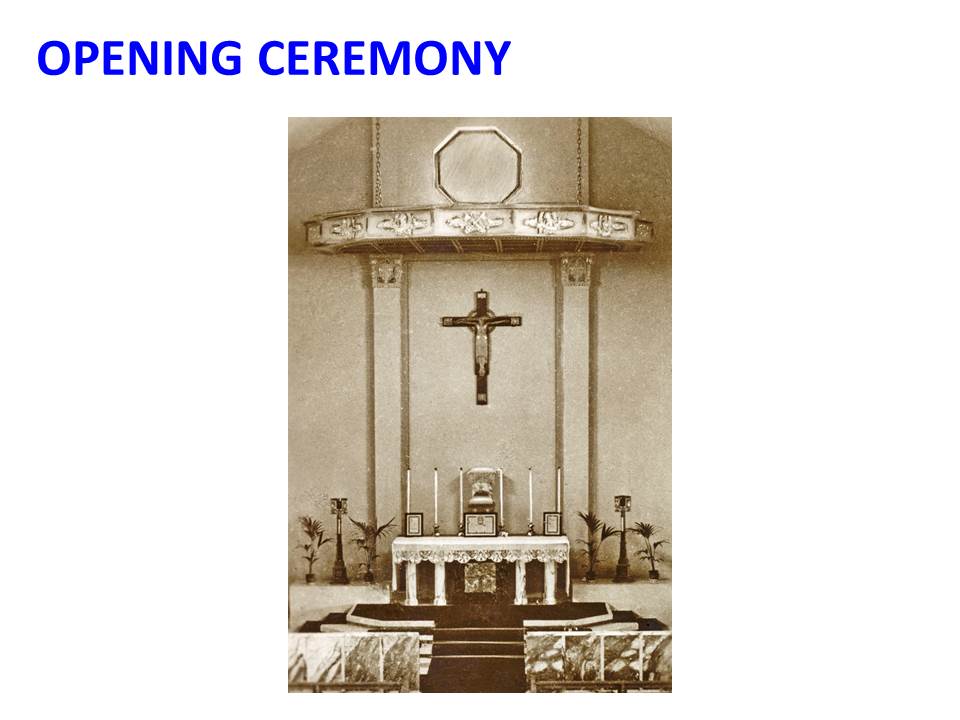
the
main altar donated by Harry Kemp,
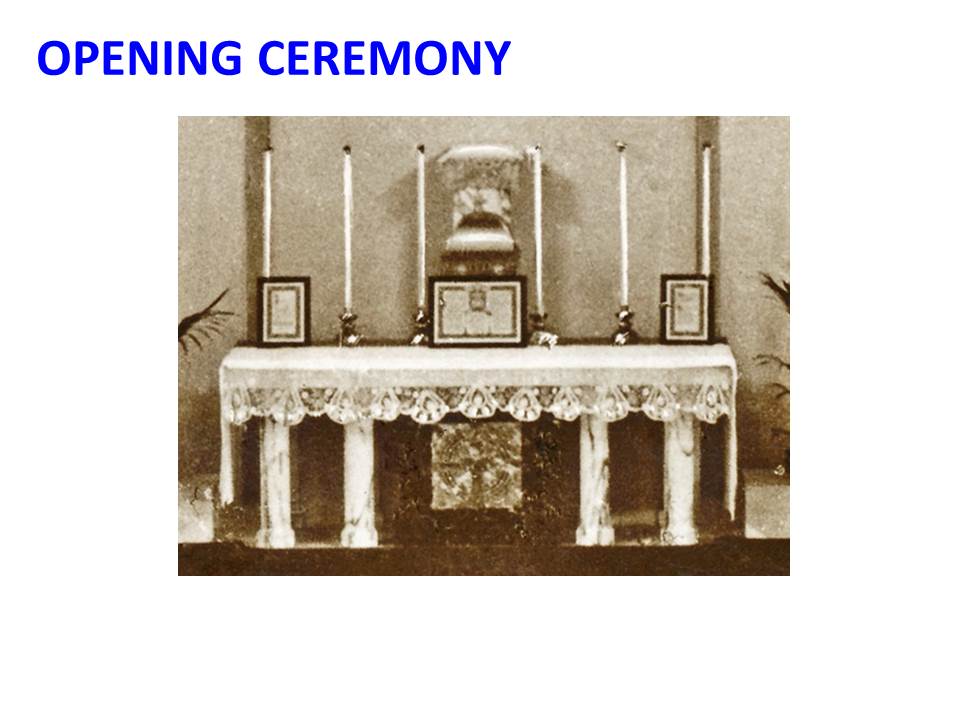
the Sacred Heart altar
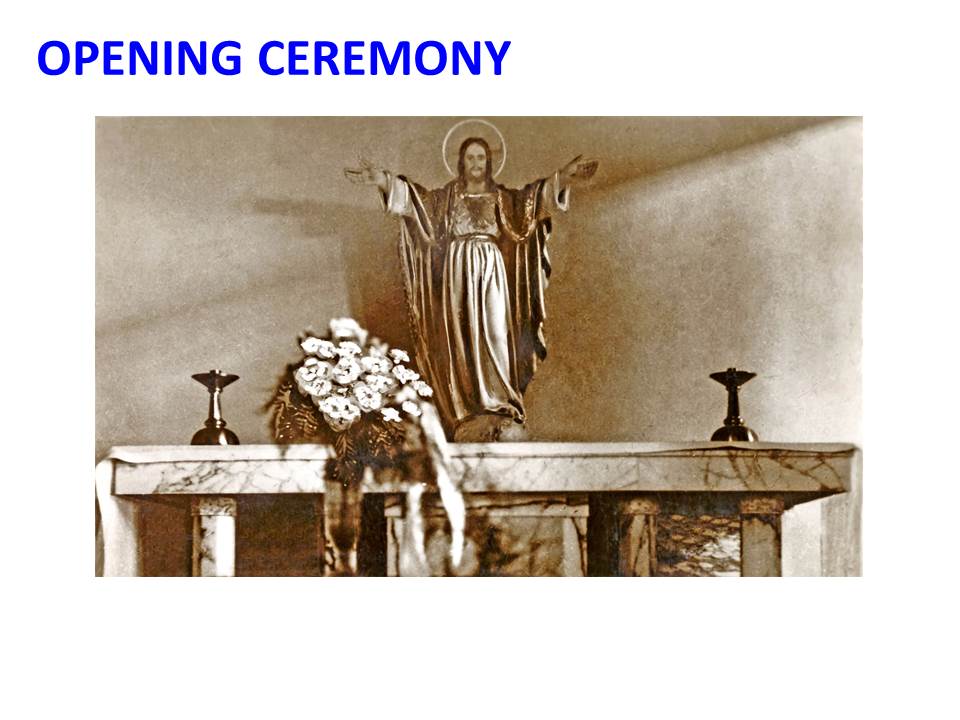
and Our Lady's altar.
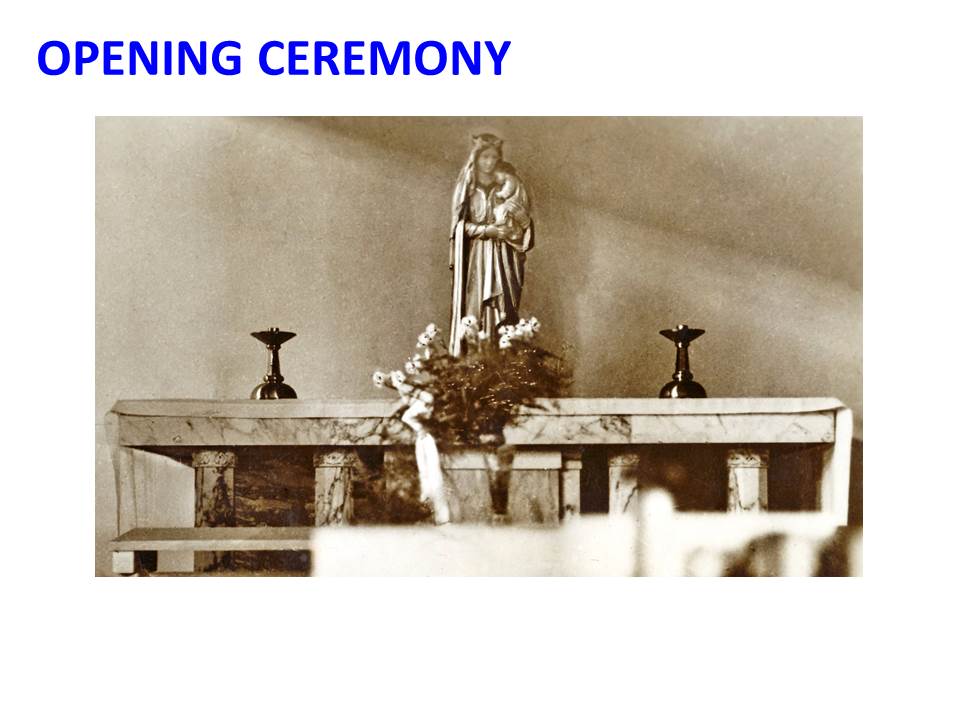
The Church was packed when at midday, Archbishop Mackintosh performed the official
opening during High Mass.
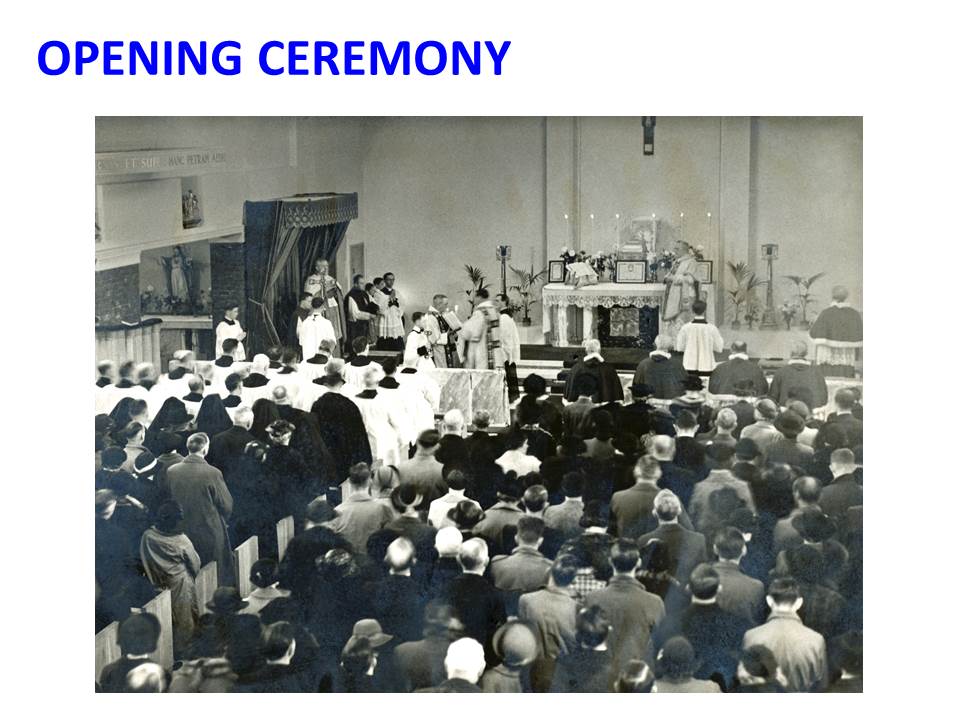
The principal celebrants were Father Archibald McSparran who, in 1947, became
our first parish priest. He was assisted by Father Robert McCliment and Father
James McCarroll. Fittingly, all three priests were born of Ardrossan.
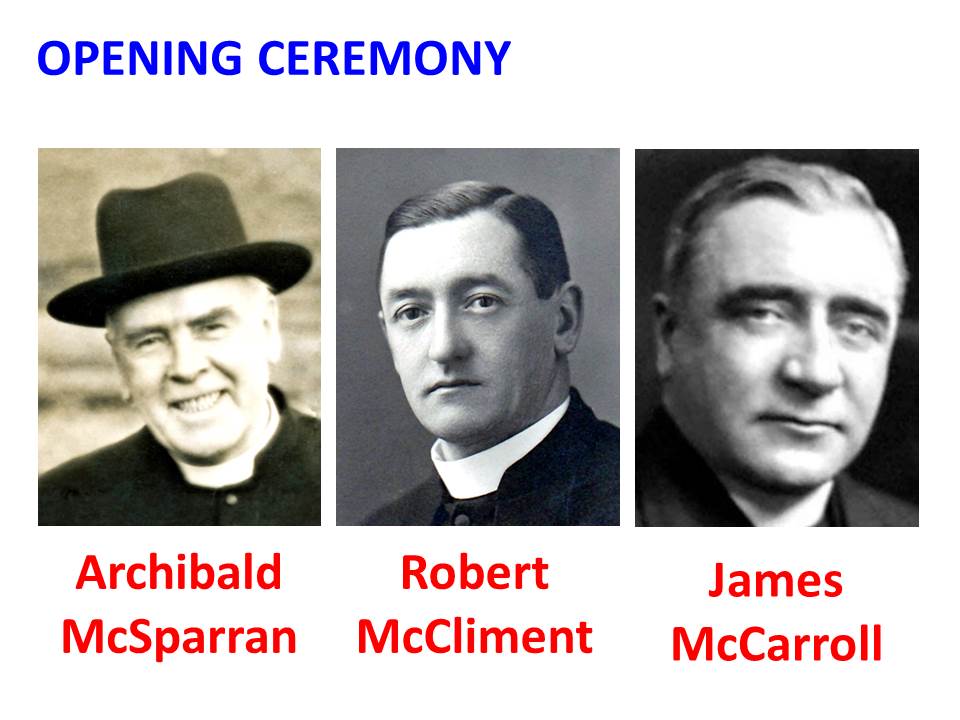
These are photos of some of the altar servers of the first Mass
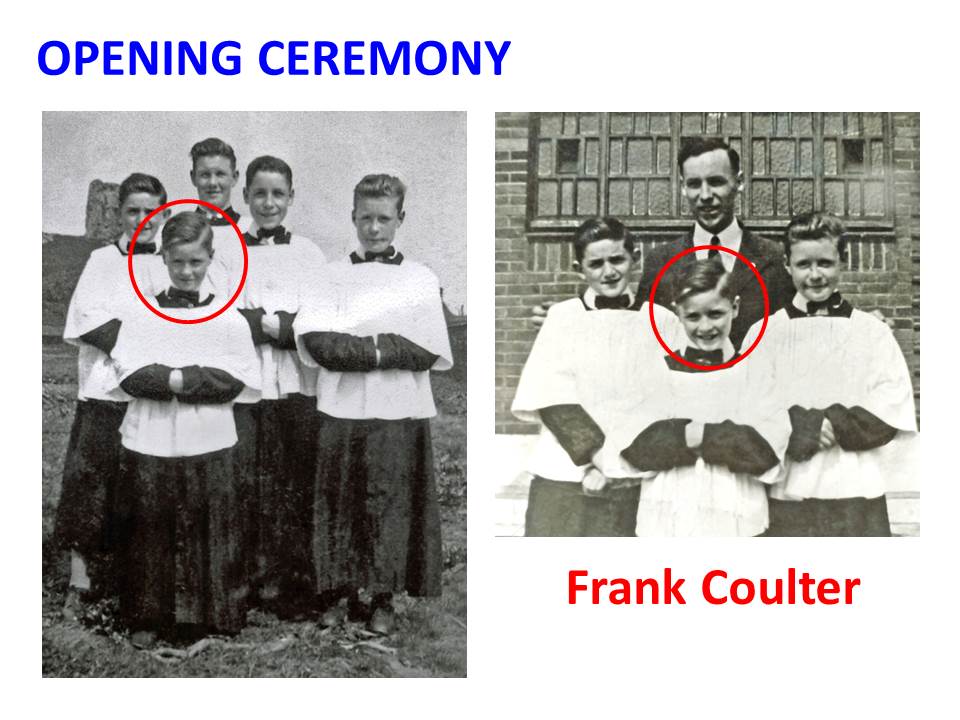
The angel-faced young man circled is - after seventy-five years - still one
of our most faithful members and this evening, he was again an altar server
at the anniversary Mass. It is our pleasure to share this commemoration with
Frank Coulter who is here this evening.
After the Church service, luncheon was served in the Franciscan Convent, Montgomerie
Crescent, Saltcoats. This pamphlet commemorated the meal.
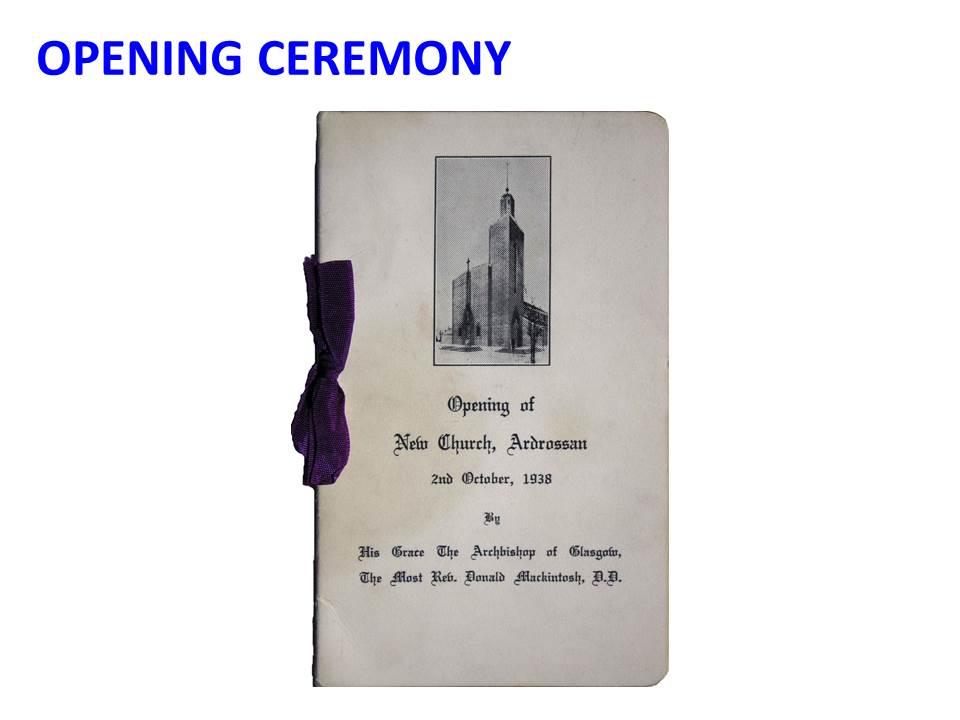
The diners were very good to themselves as they had a five course meal followed
by coffee.
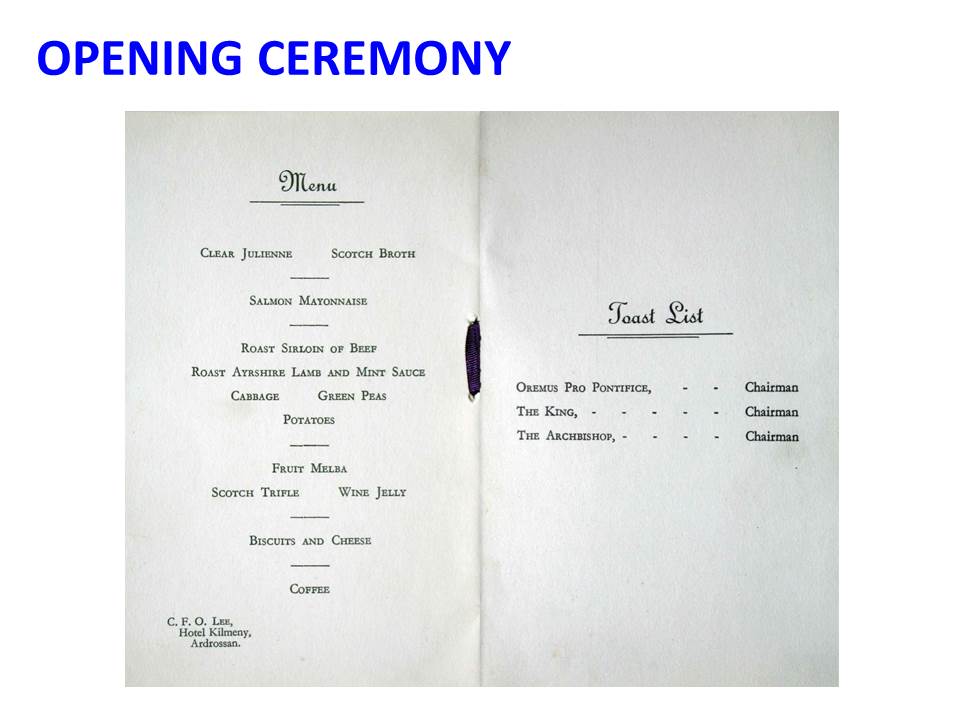
Thus ended the first day in the life of the Church of Saint Peter in Chains
and so also ends this presentation. It might seem strange to end a presentation
on the history of our Church on its very first day but the later years are fairly
well documented, for example, on our website. I am very, very grateful to the
many people who helped to make presentation by providing photos, documents and
stories. Our one hundredth anniversary is twenty-five years from now - on 2
October 2038. That day is a Saturday and we will have another celebration Mass.
You are all invited so write it in your diaries. Because of the shortage of
clergy, our parish priest will still be - Canon Matt.
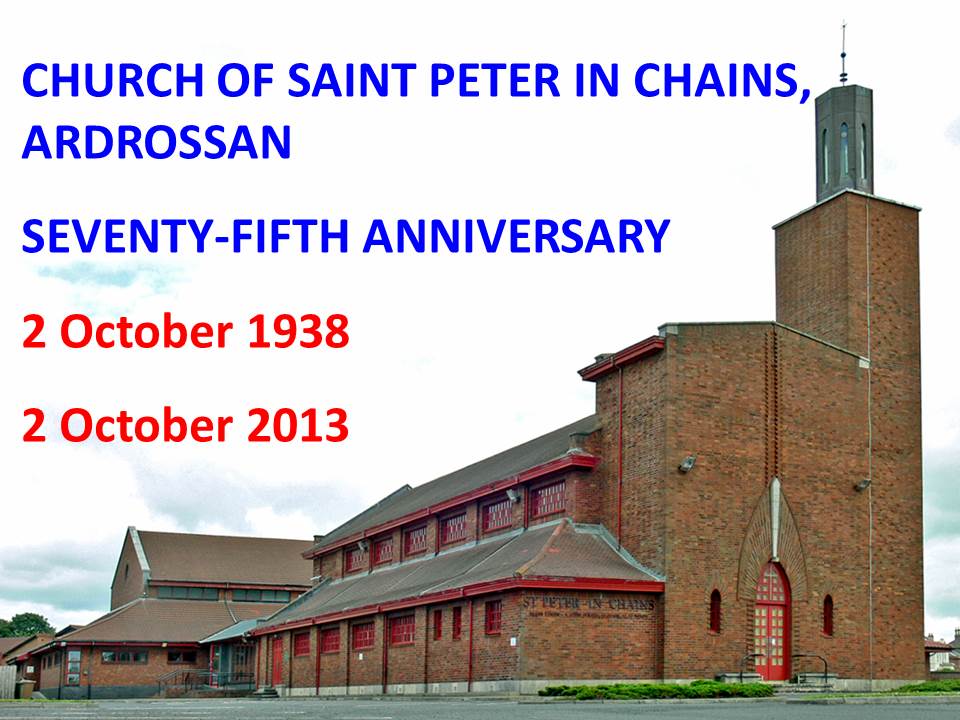
Earlier, I mentioned that Faith Of Our Fathers was sung at the anniversary Mass
on Wednesday. The music you are listening to is not that of a professional choir
but our own Saint Peter's choir singing Faith Of Our Fathers this evening. Faith
Of Our Fathers was chosen for several reasons including the fact that Faith
Of Our Fathers could actually be the subtitle of our anniversary celebration.
Several times this evening, I have referred to someone's father - and equally
to mothers and grandparents - Brian Kemp's and Susan MacKay's grandfather, Benet's
Brodie's grandmother, Peter's Reilly's father, my own granny, Margaret's Gribben's
mother and father, Kathleen McEvoy's father, the father of the McCann family,
Michael's McCulloch's father and Joan's Usher's father. Hundreds of fathers
and mothers have gone unnamed. Saint Peter's was built because of the Faith
Of Our Fathers, mothers, grandfathers, grandmothers and other ancestors. We
should be very appreciative and proud of the legacy they have given us.